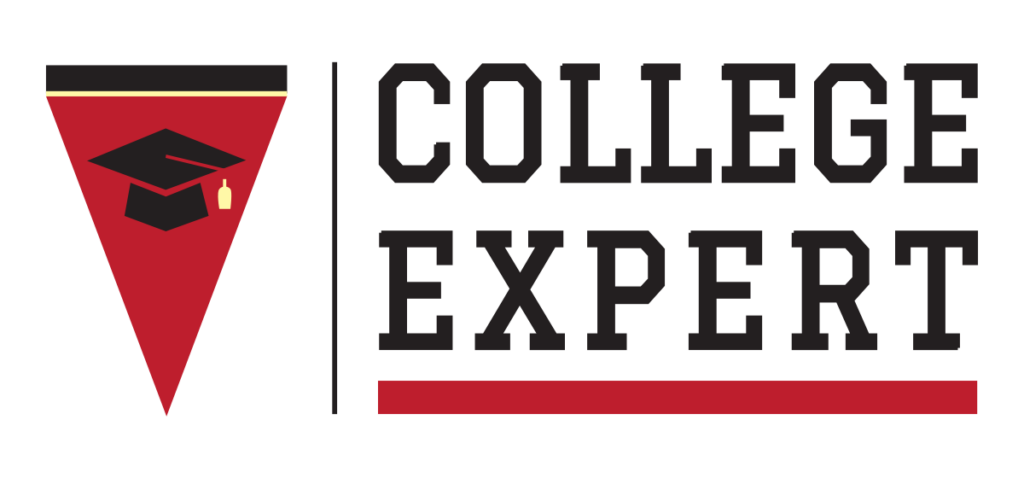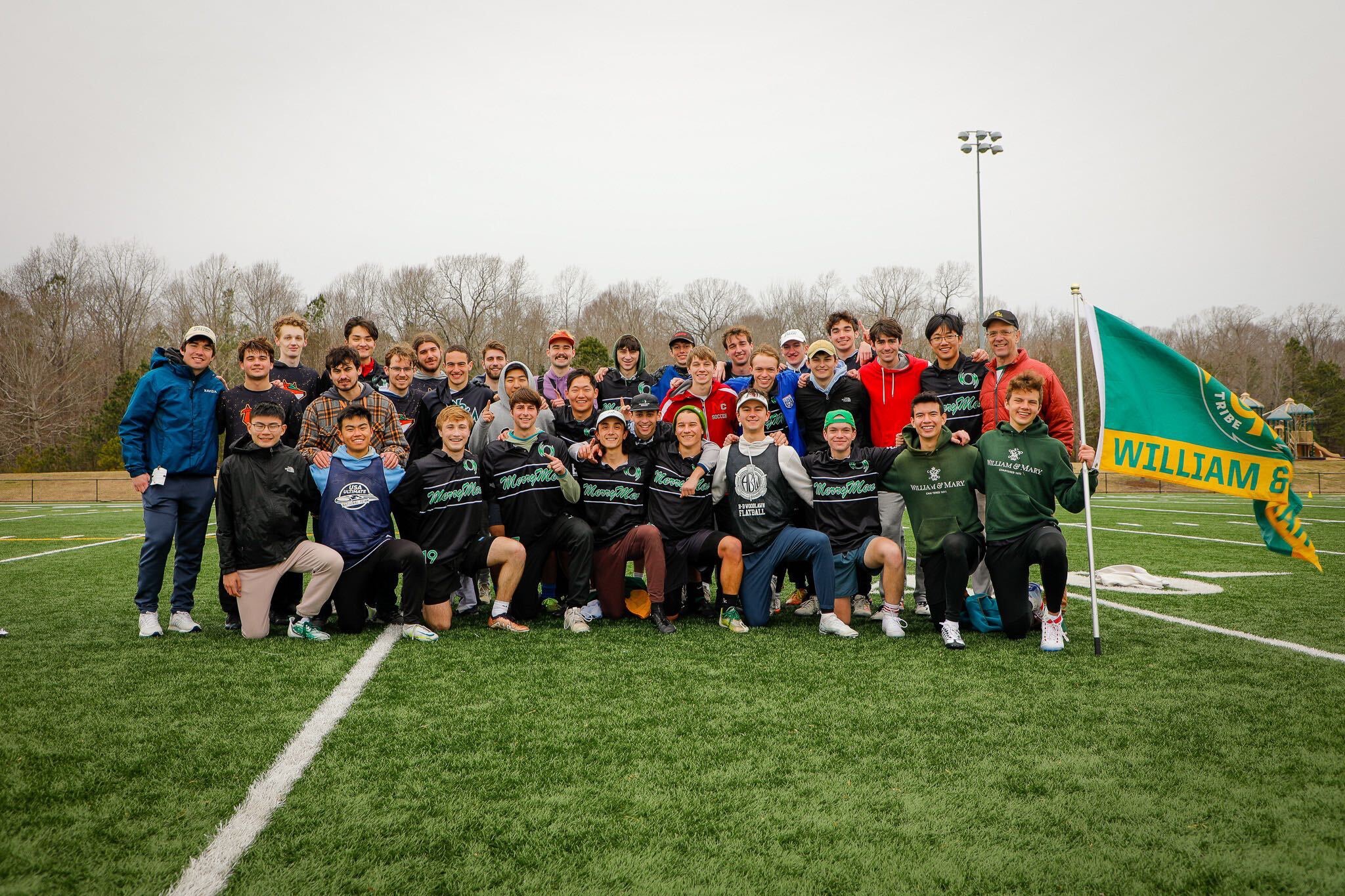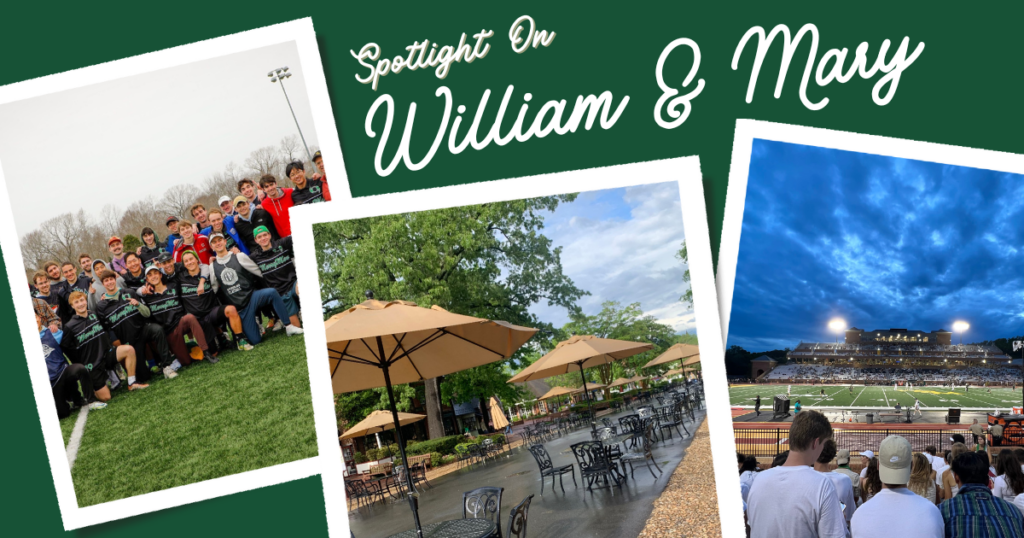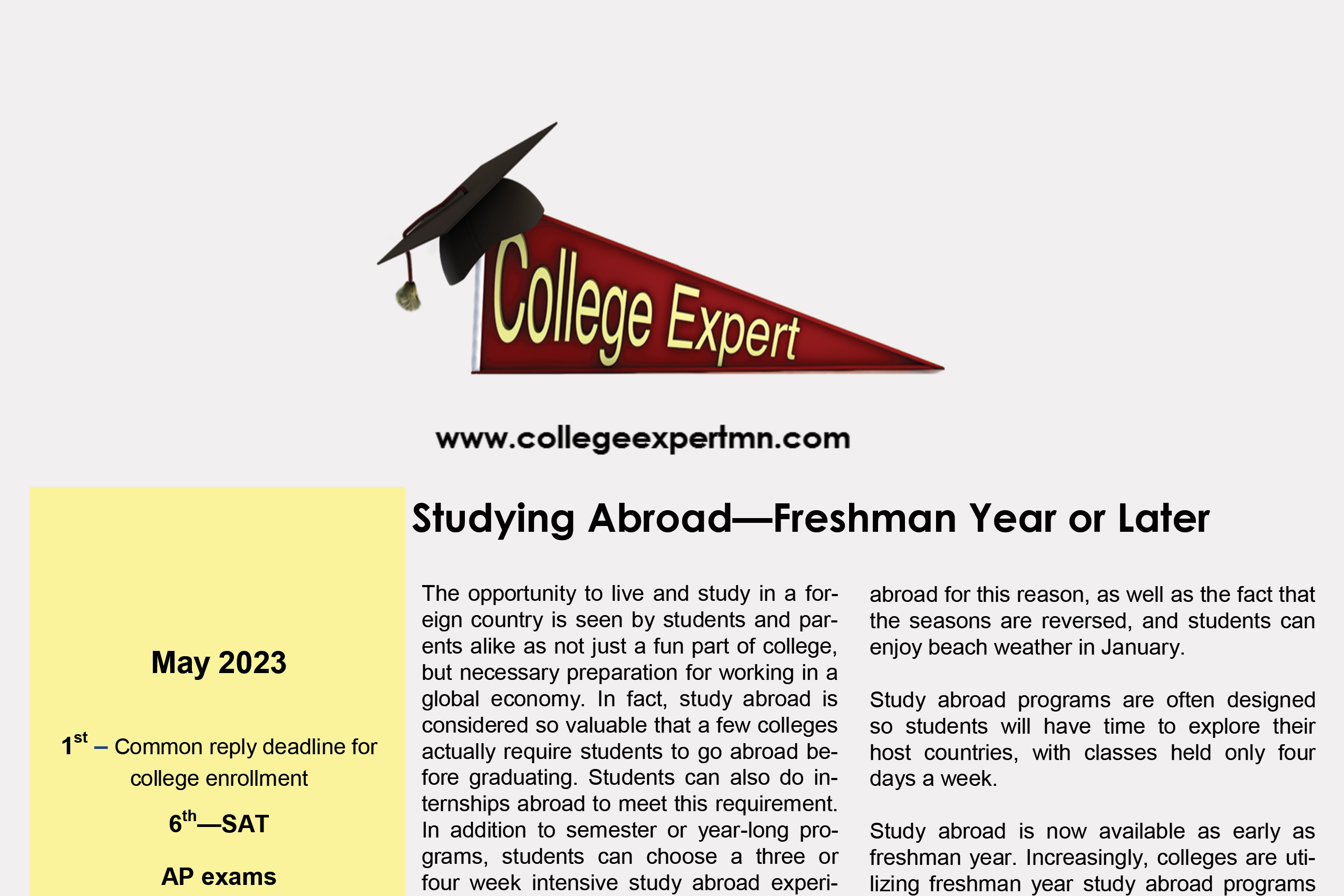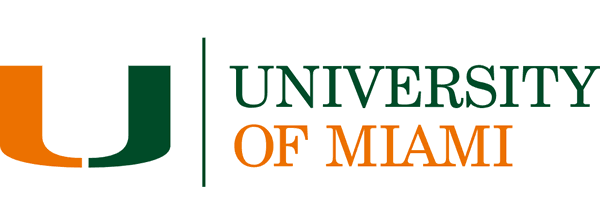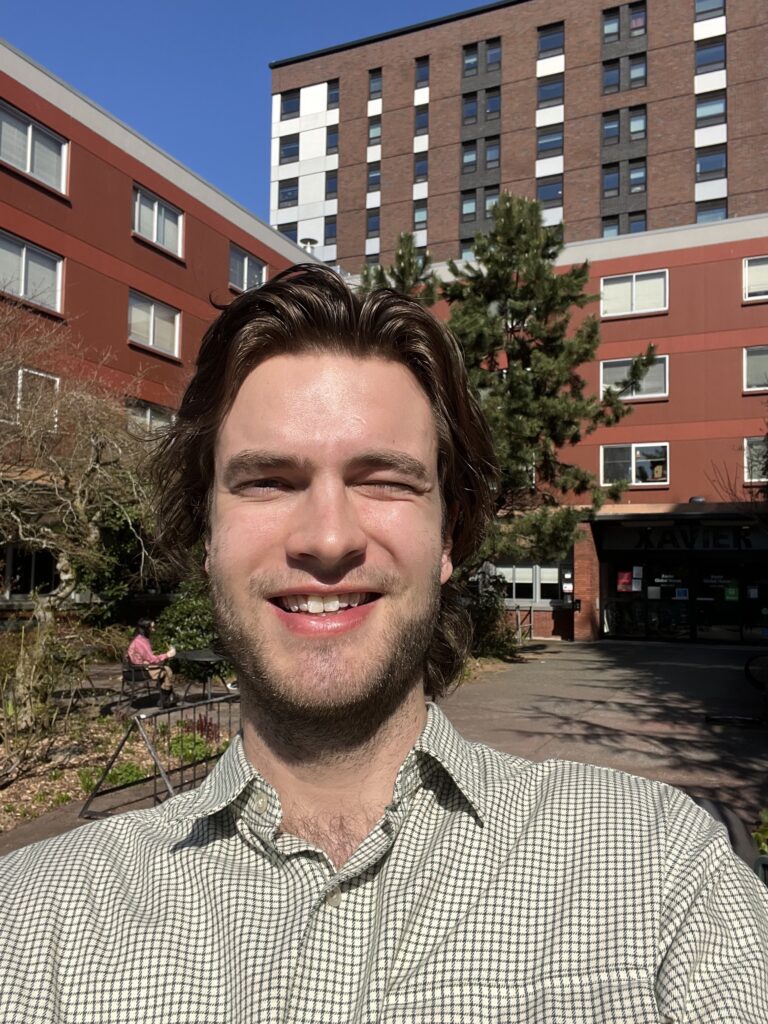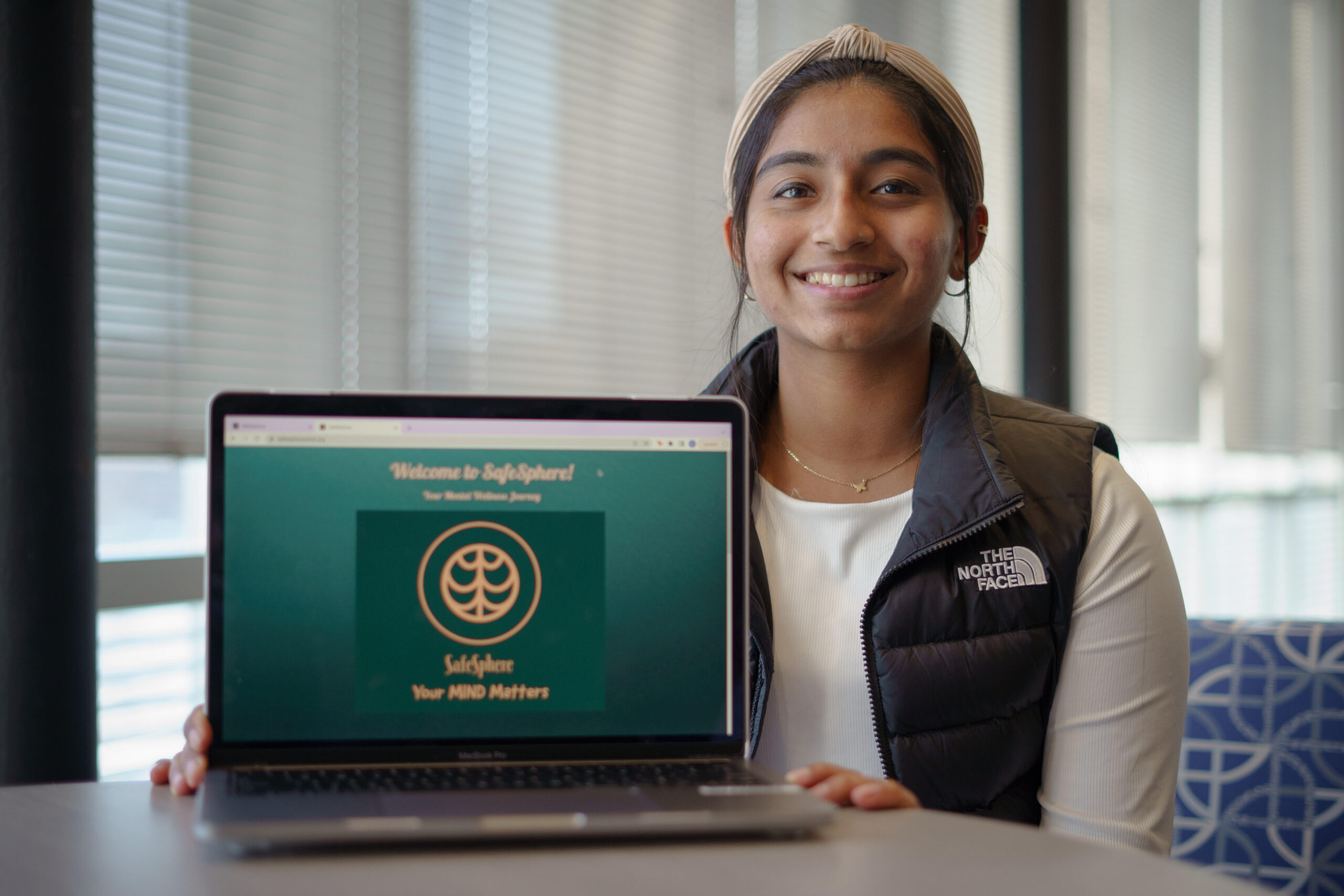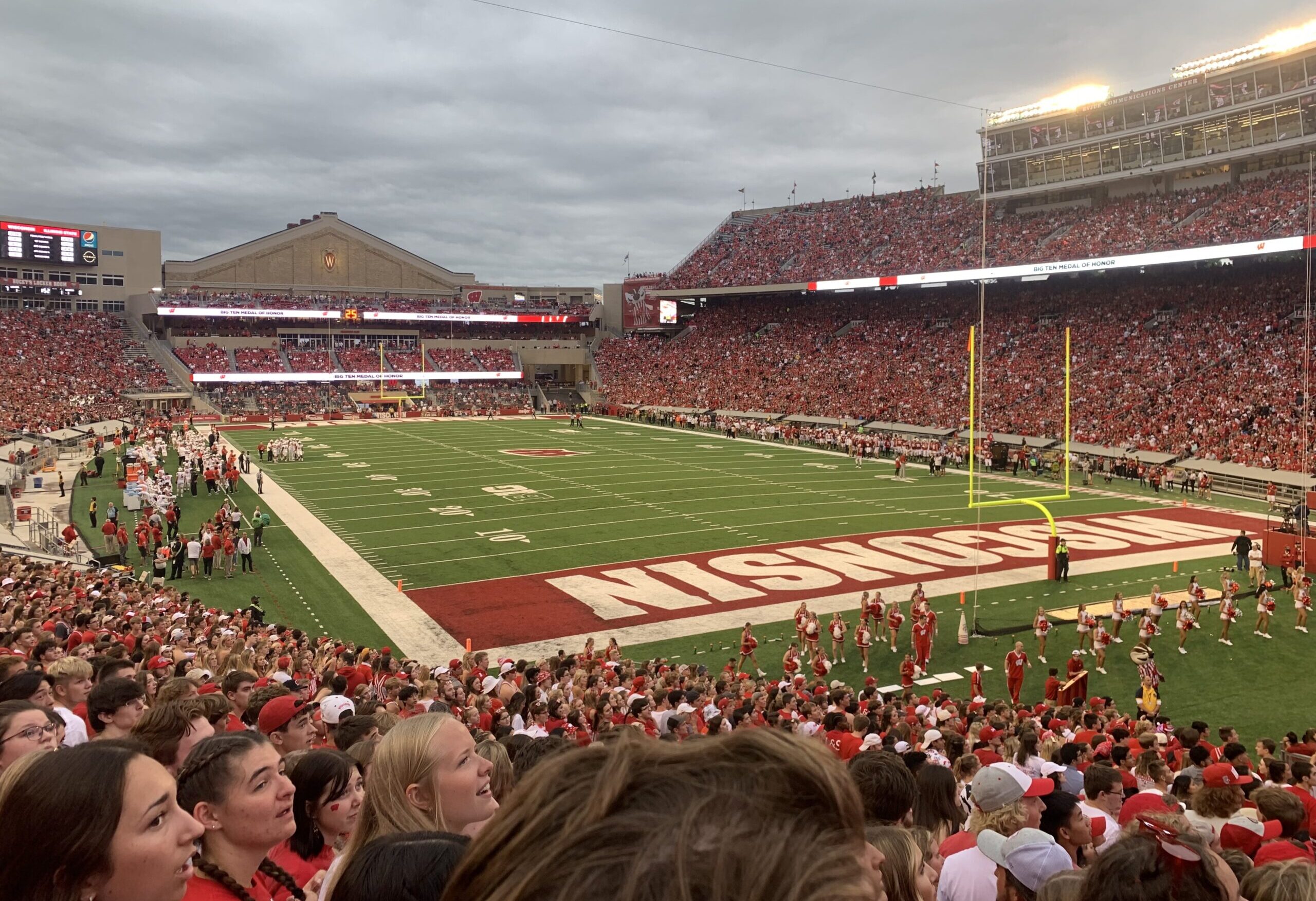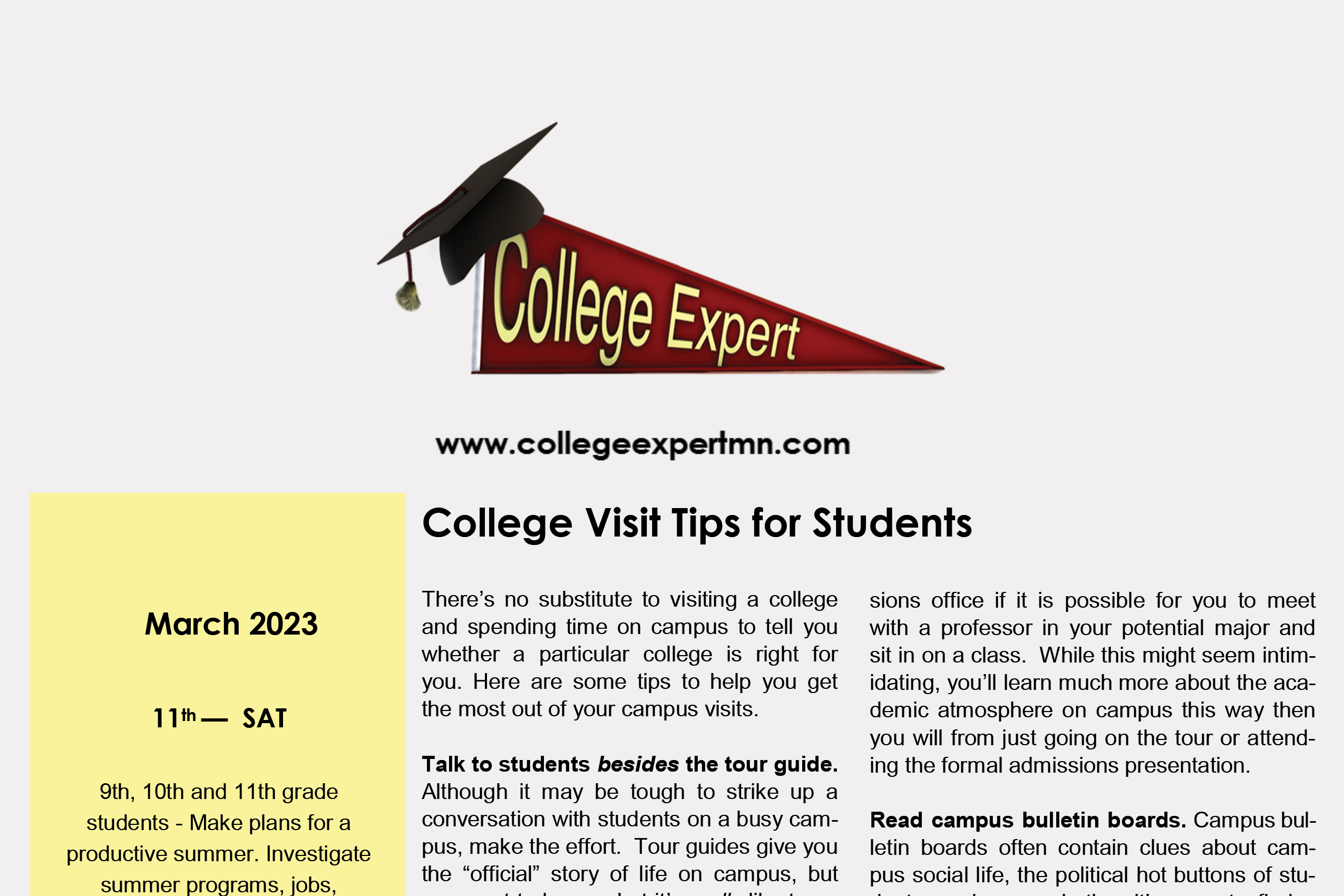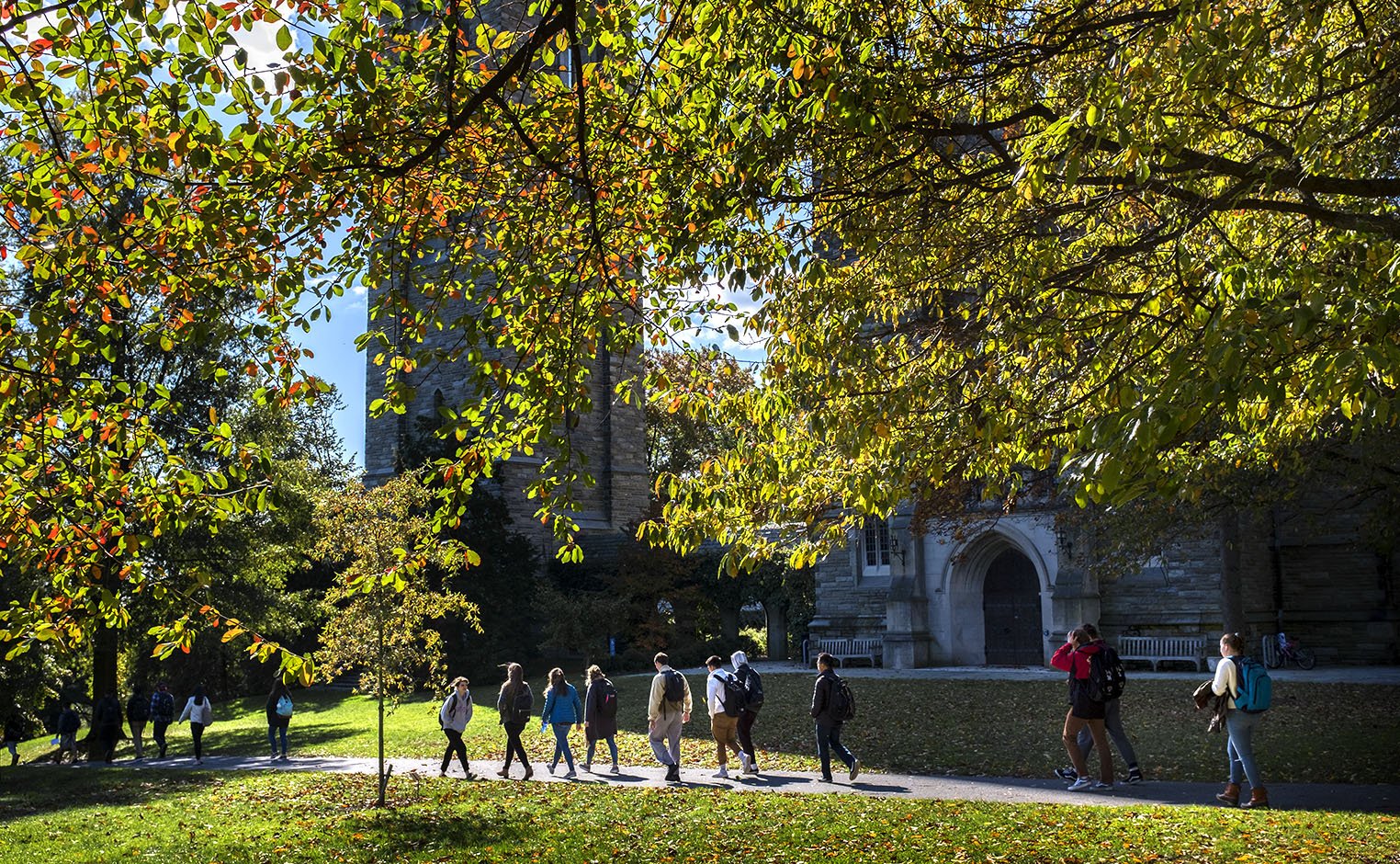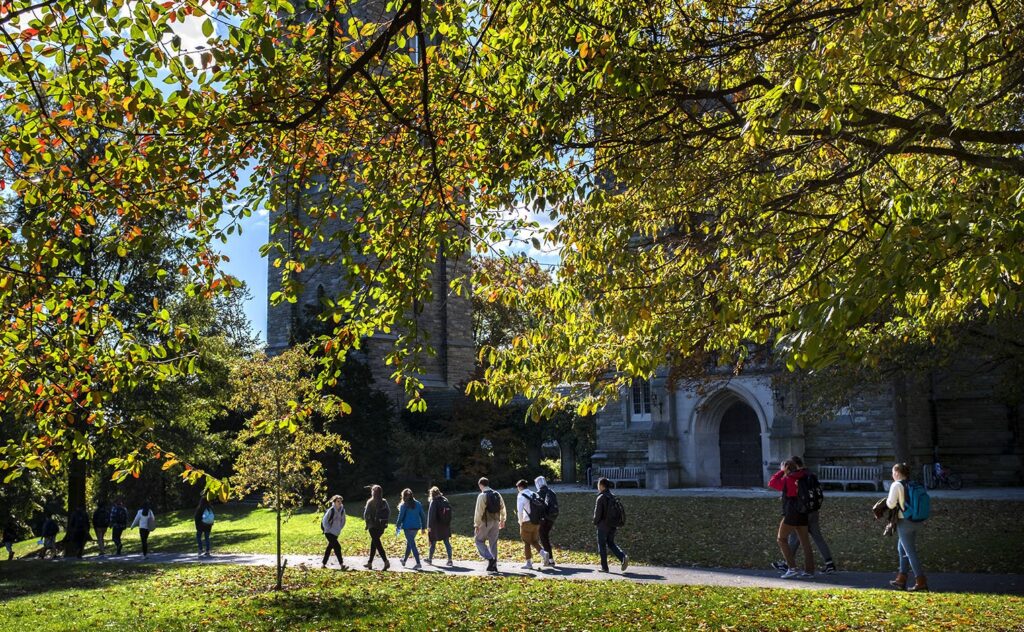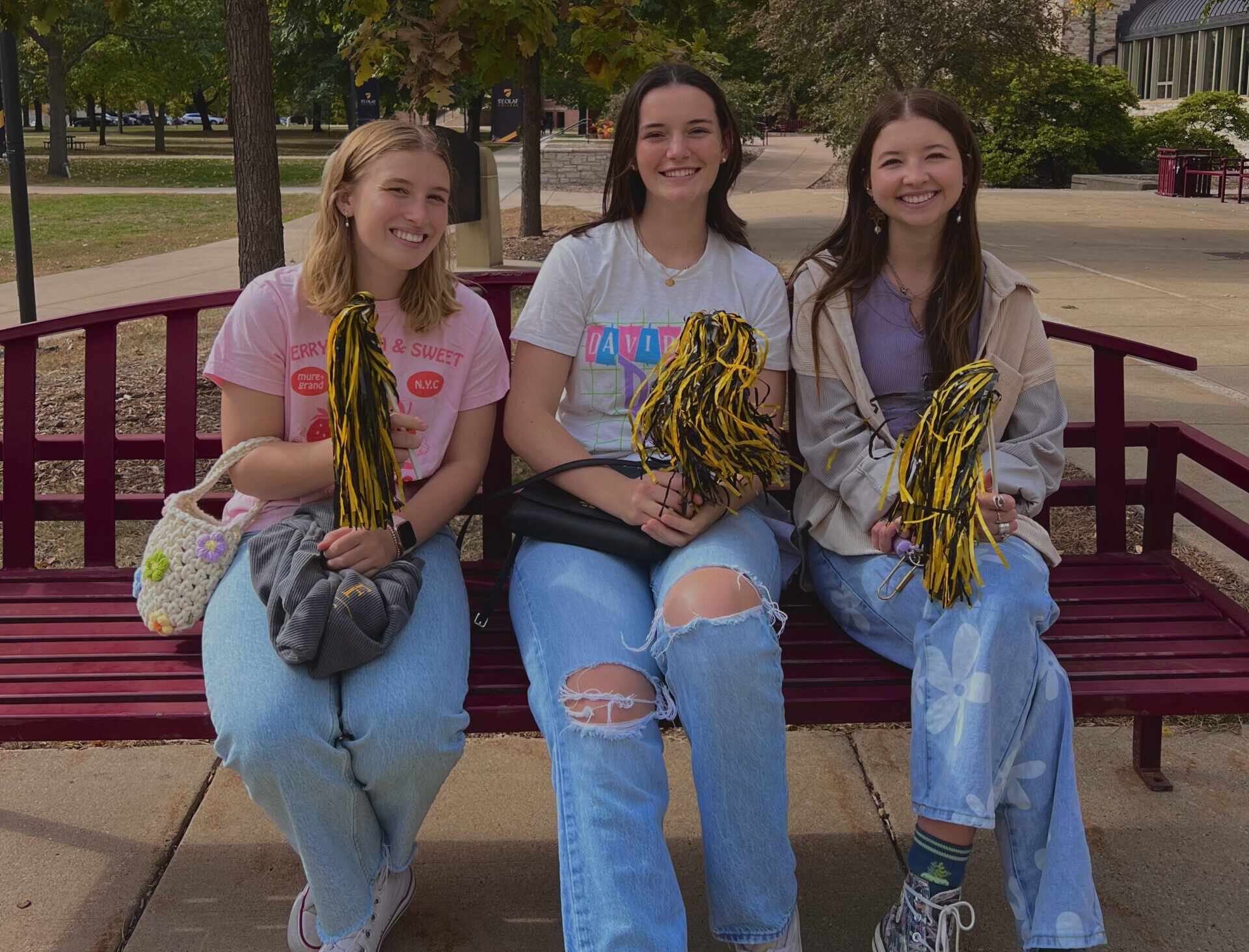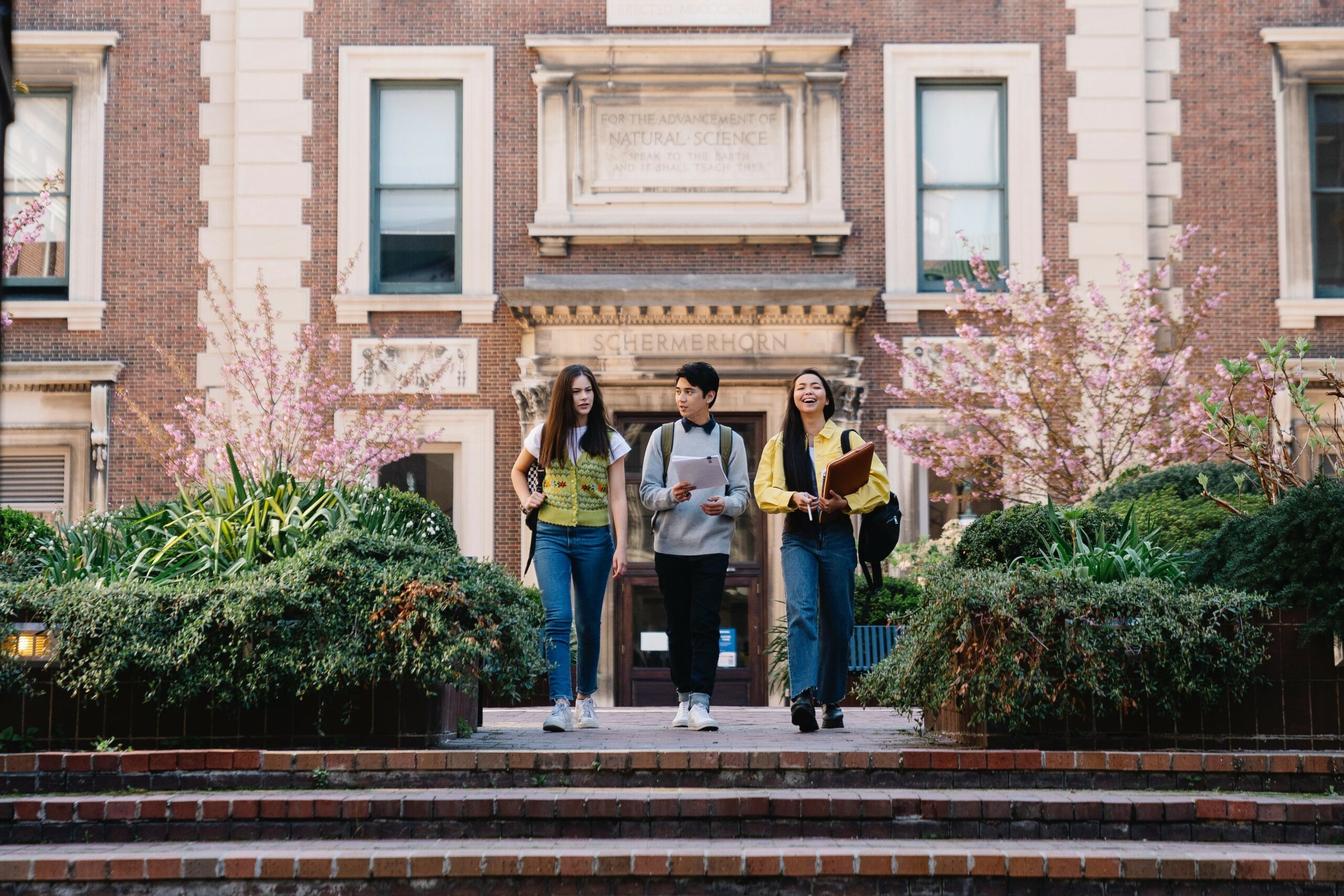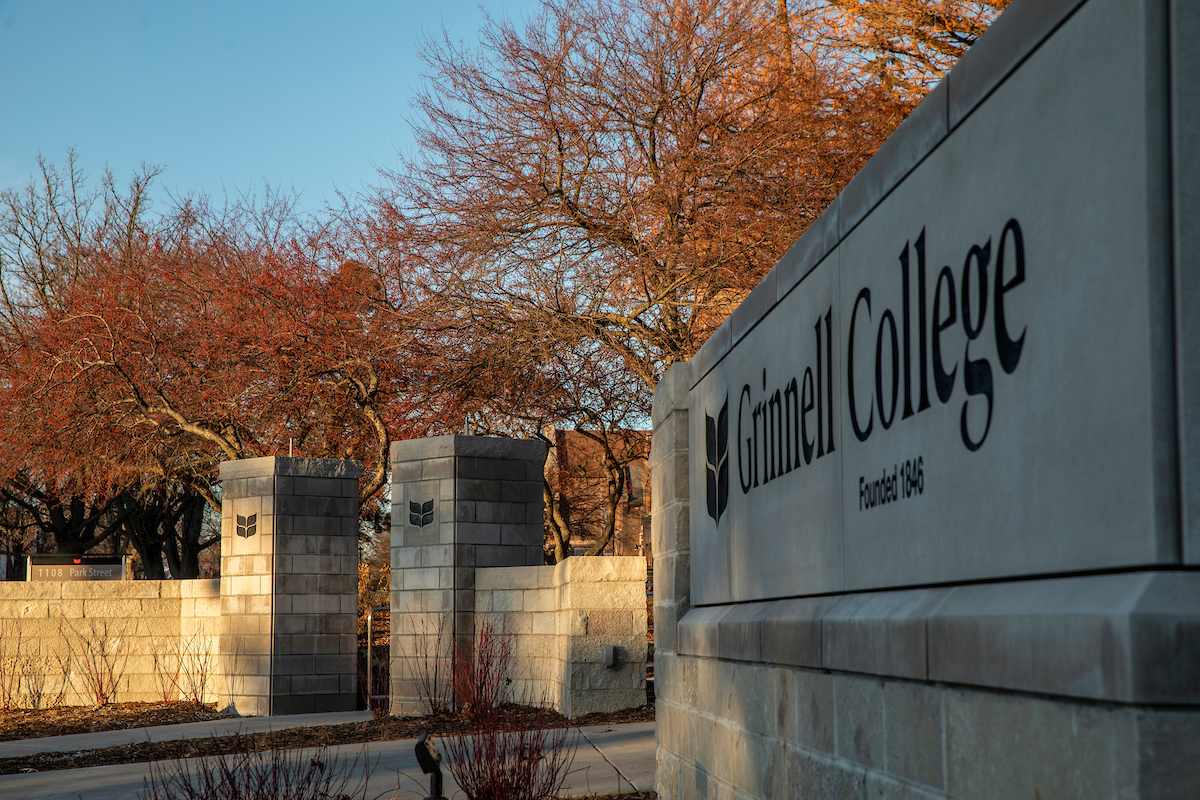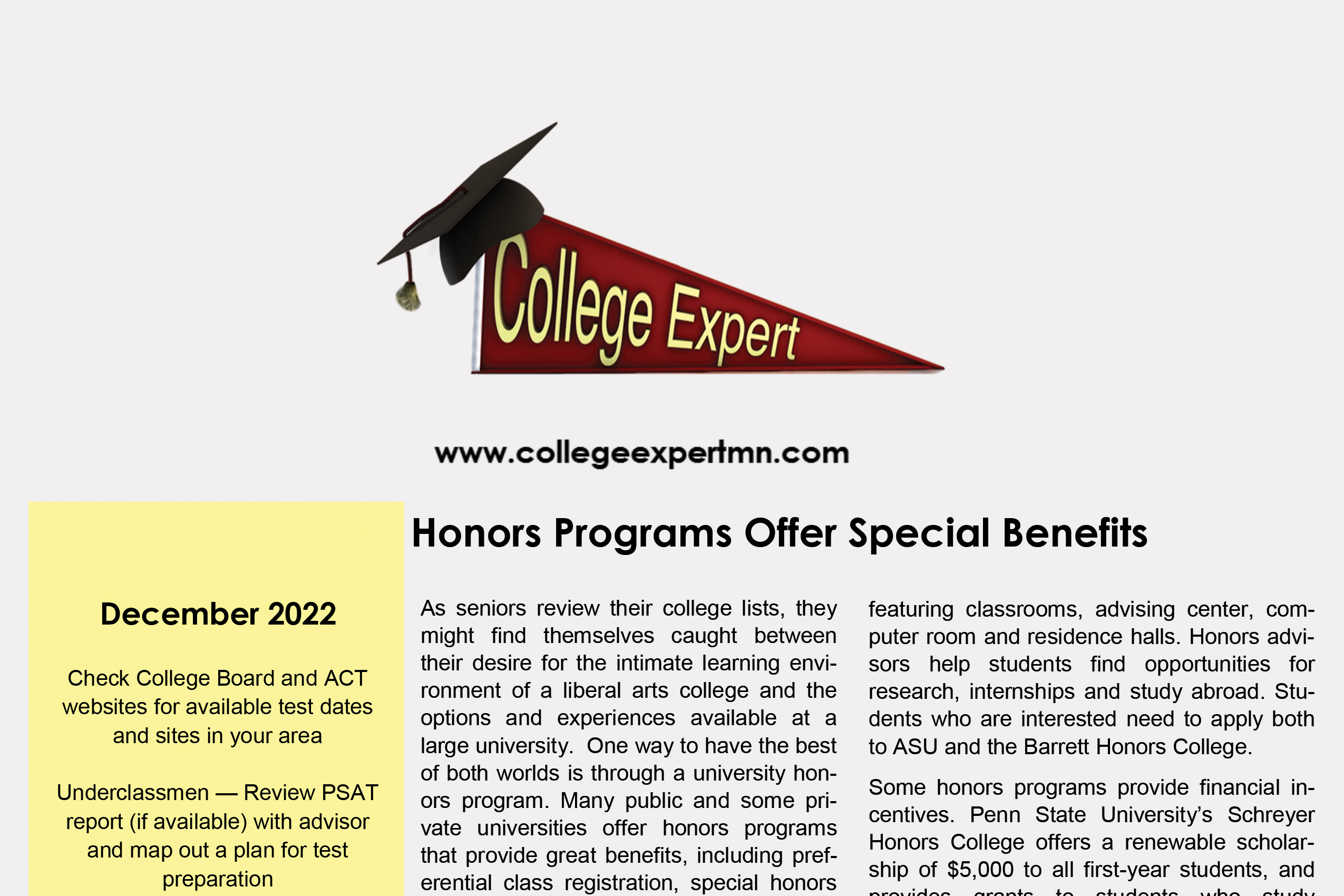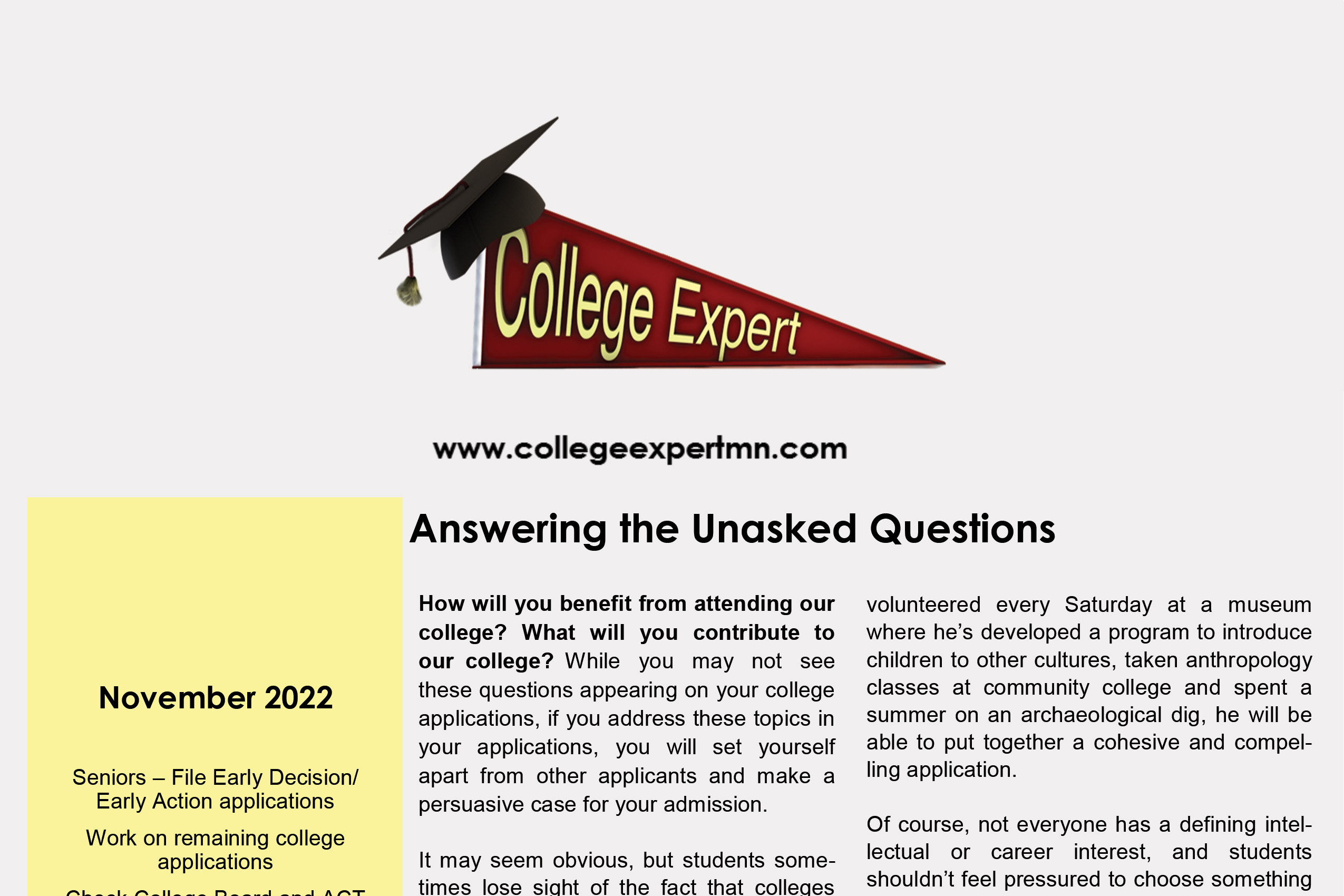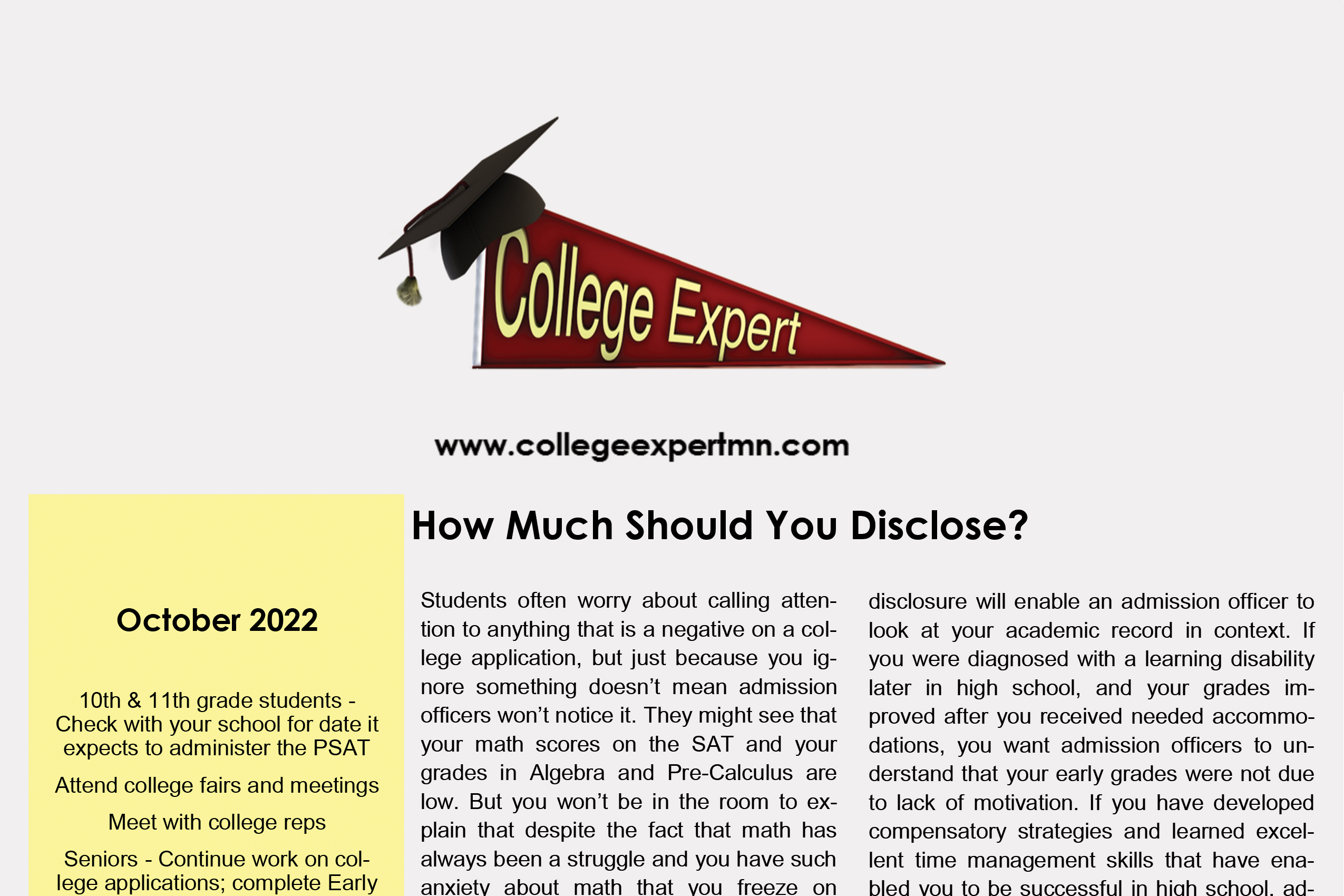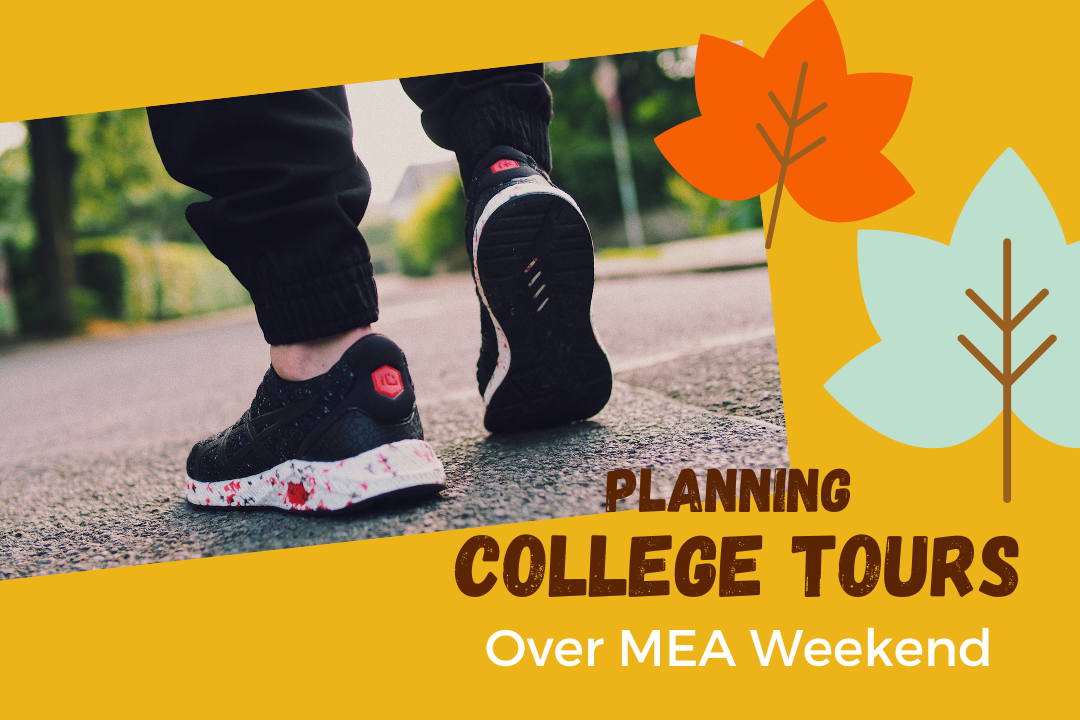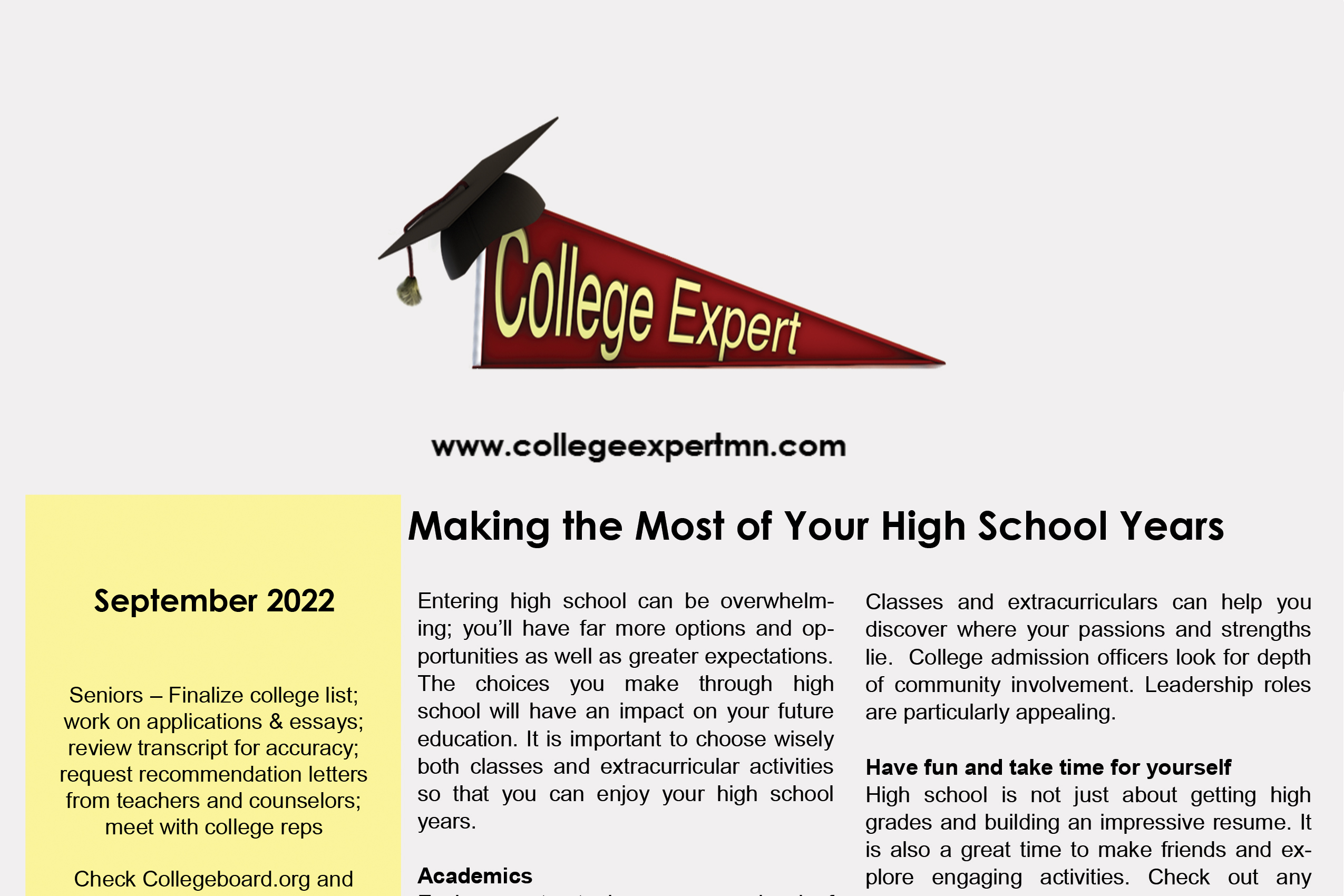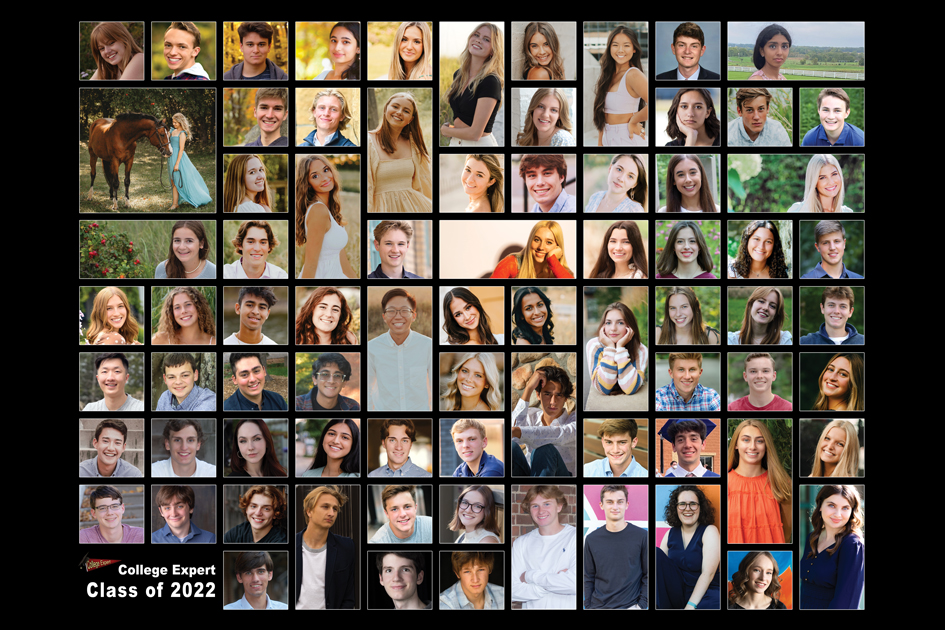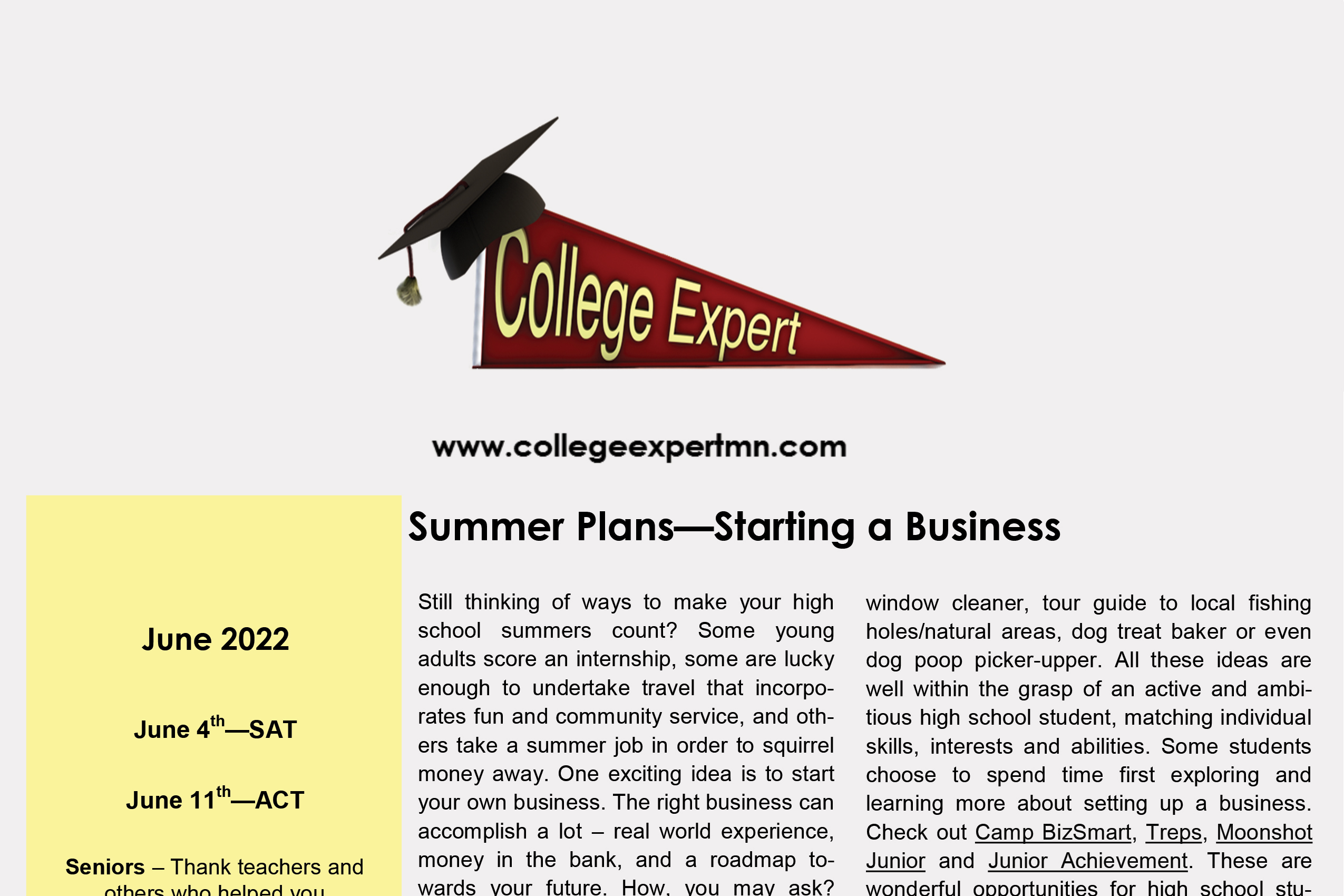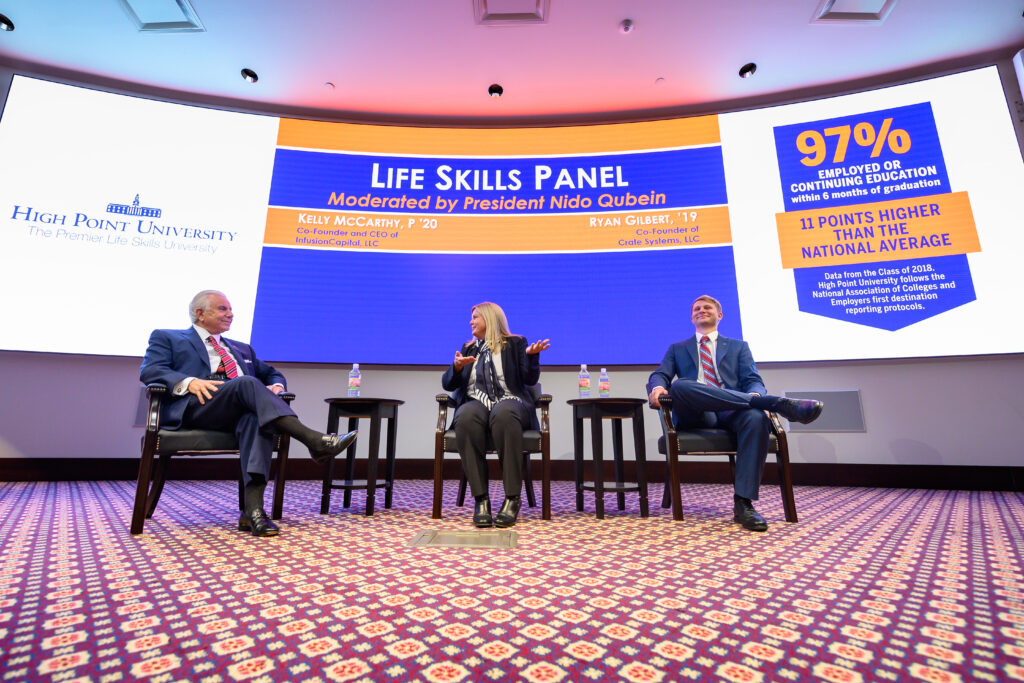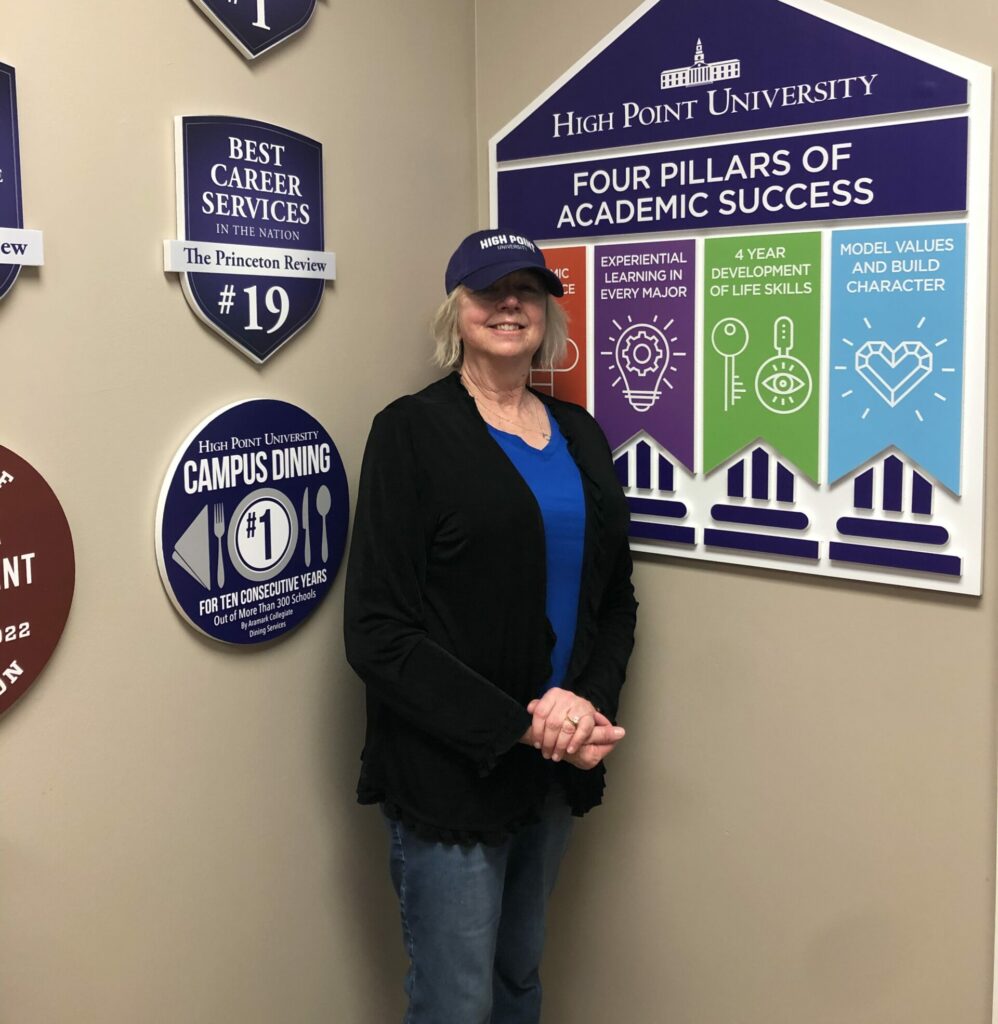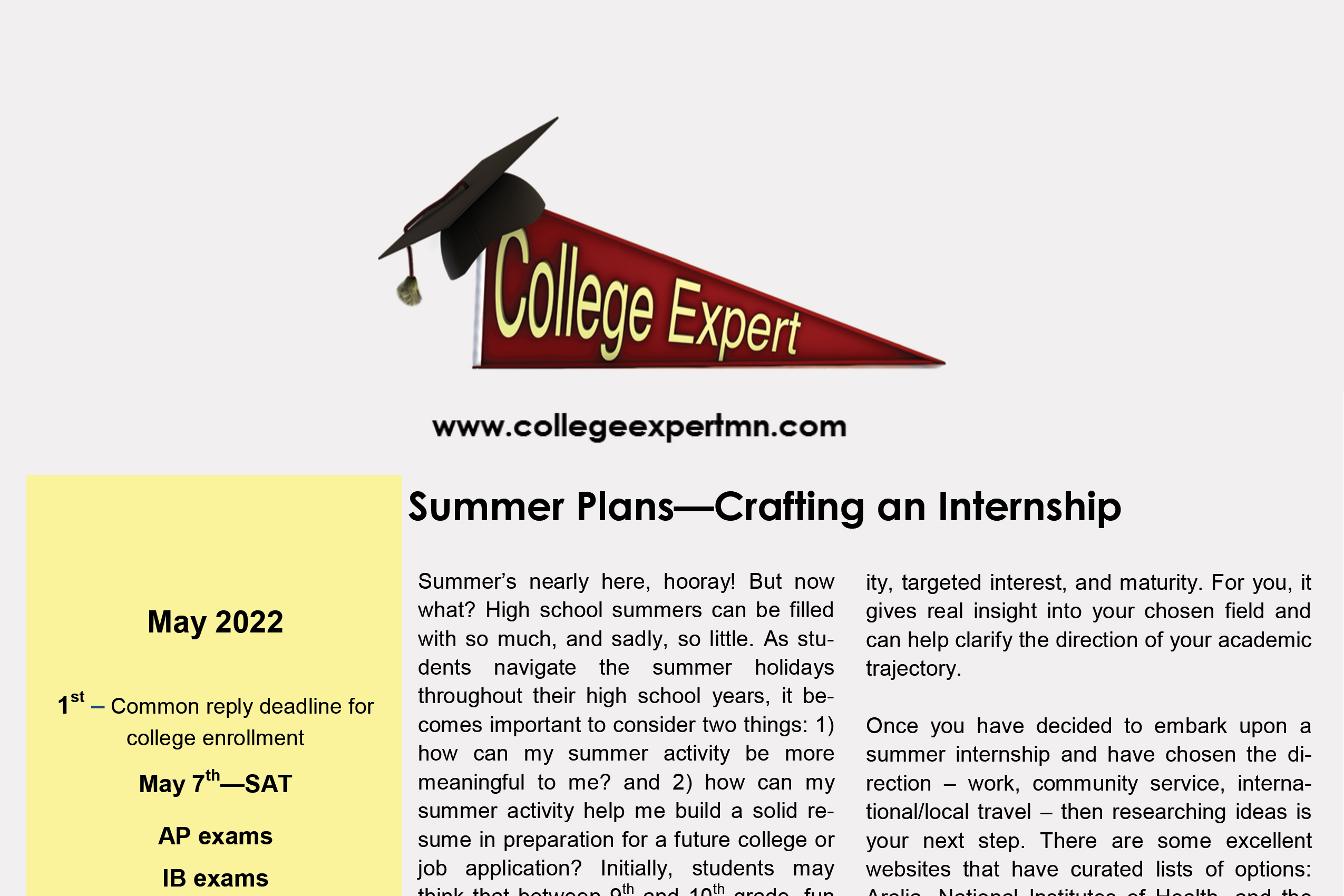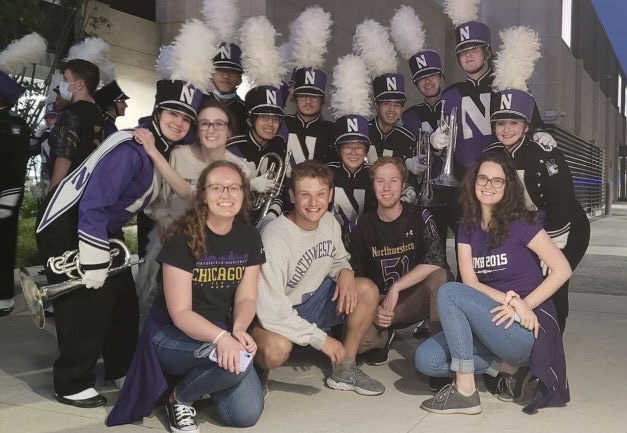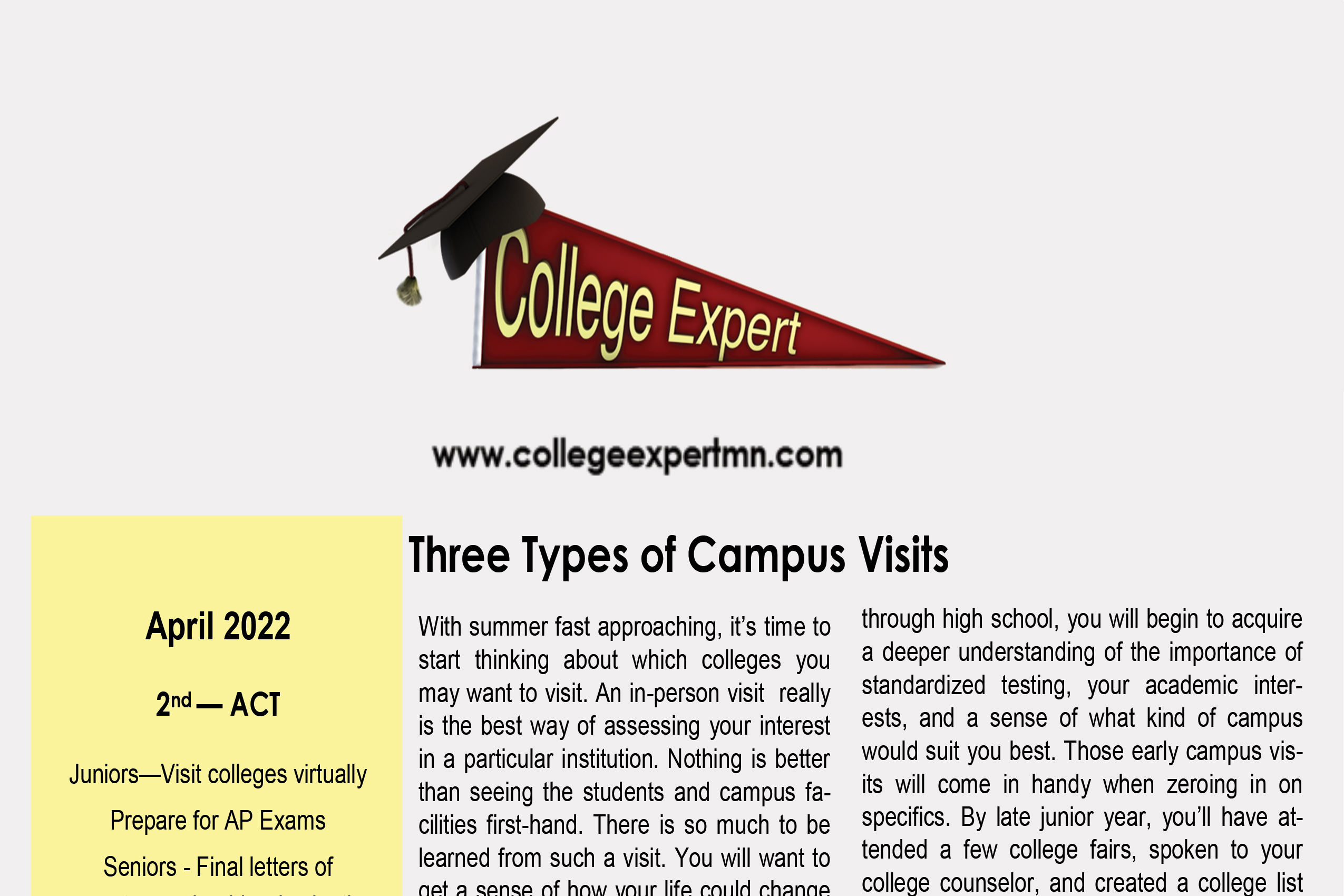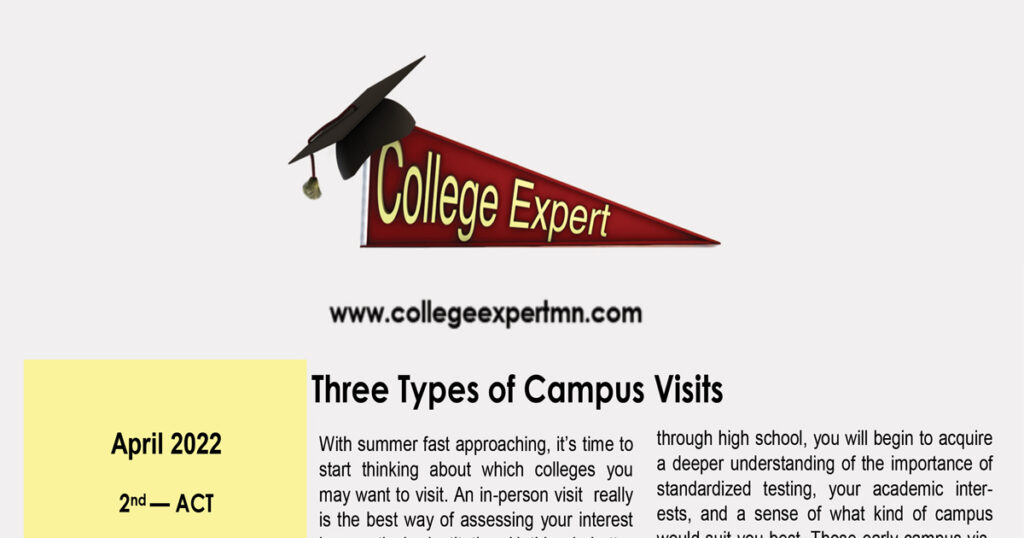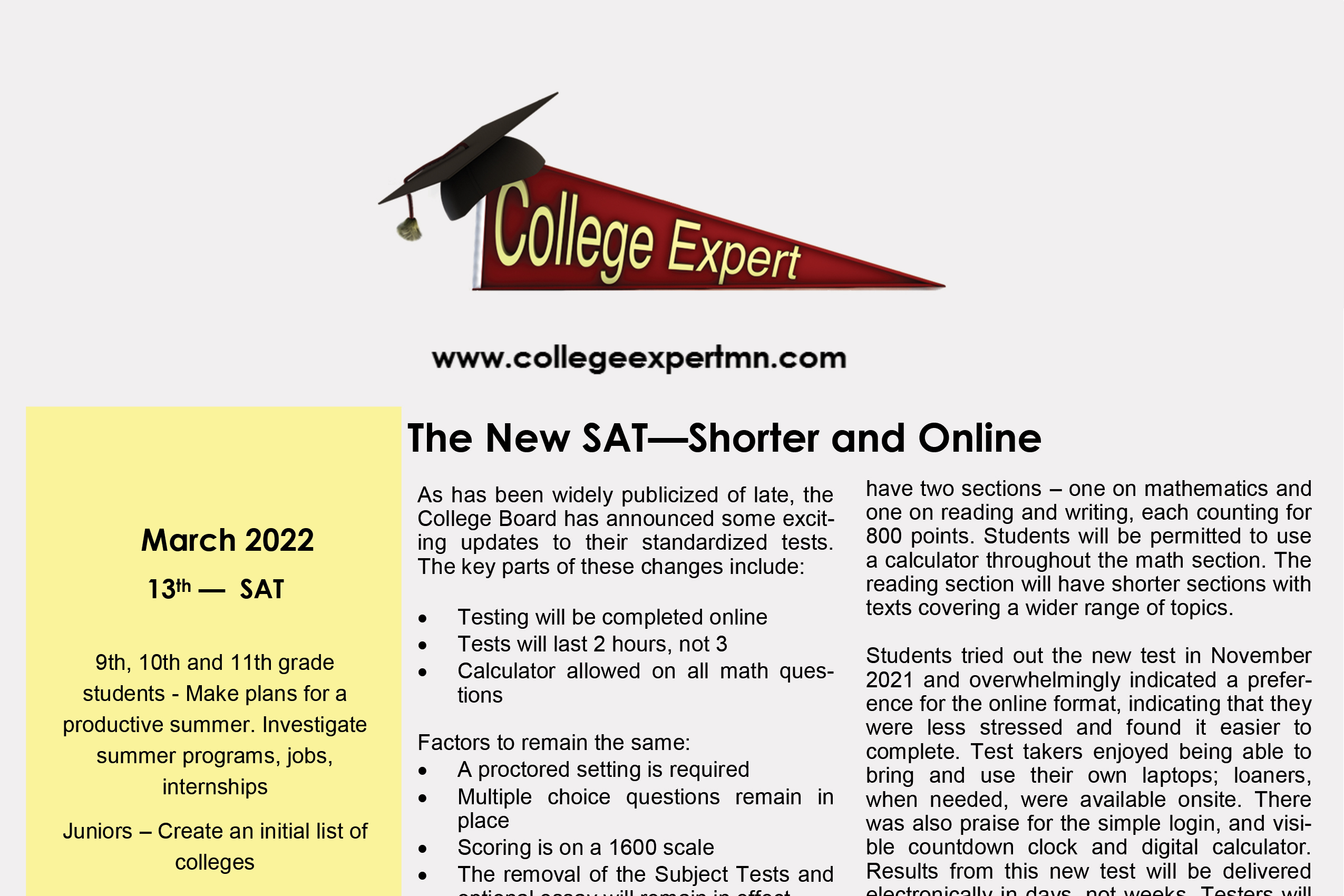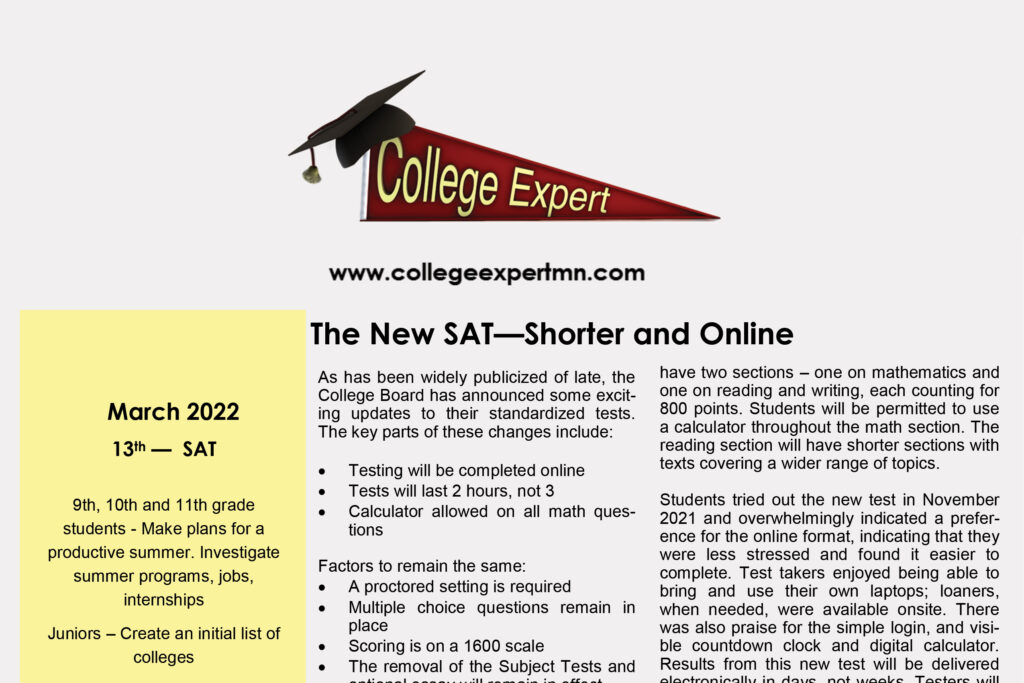Erik reflects on the charm and challenges of his freshman year at the nation’s second oldest college. Read why he loves its history, its professors and his ultimate Frisbee team!
Reflections on our Class of 2023
Each year, we are privileged to get to know our high school students across the state and country as they complete their college journey. And every May, we reflect on their stories and accomplishments with gratitude and awe. We are so proud of you, Class of 2023!
This has been the most competitive year for admissions since we started College Expert 20+ years ago. Most colleges remained test optional, which among other factors led to a record number of applications. As a result, admission to selective colleges became an even greater reach. Many students beat these odds, and we are cheering their success. In other instances, denials allowed students to better examine and appreciate all of their options. We truly believe there is no one “perfect college,” and twists and turns in the process often can lead to an even better fit. Families tell us this every year.
This year’s matriculation list fills us with tremendous pride and satisfaction. We are confident our graduates are destined for colleges where they will be challenged, find supportive communities and boldly move forward with their personal goals.
We are excited to report:
- 95% of our students applied to some colleges by the early action deadline and heard back from colleges before winter break.
- 38% of our students applied ED/Restricted Early Action and 63% were accepted.
- 88% of our students will attend out-of-state colleges in 34 different states. (whereas nationally approximately only 11% venture further than 500 miles from their hometown)
- New colleges that our students will be attending include Long Island University, Rugters, Texas Tech, State College of Florida and Olin College of Engineering.
- 95% of our students will attend their first choice or a high-interest college.
Drawing on our knowledge, our experience, and hundreds of college visits, we recommended an eclectic mix of colleges, many of which were unfamiliar to our clients. In fact, it’s possible some students never would have considered the colleges they chose without comprehensive and thoughtful discussions about finding the right fit, which is our guiding philosophy. As a result, they made decisions confident their choice was right for them.
Our Class of 2023 students will matriculate to colleges across the country. As you can see in our matriculation list, we have many students going to some of the most selective colleges in the country. We also have students going to national universities, engineering schools, small liberal arts colleges, research universities, Big Ten Universities, and colleges with in-state tuition. We have aspiring musicians, artists, recruited athletes, activists, actors, nurses, engineers, business majors, researchers, doctors, writers and much more. We strive to help families find ways to afford college tuition, and we were overjoyed with the merit scholarships, grants, and aid awarded to our students.
We were honored to help prepare the Class of 2023 for the next chapter and wish our seniors all the best with the adventure they have ahead of them. Please keep in touch!
Please feel free to forward this to family members and friends looking for help with the college planning process.
Here is our College Matriculation list for our Class of 2023:
American University
Arizona State University
Auburn University
Augsburg University
Baylor University
Boston College
Boston University
Bowdoin College
Brown University
Carleton College
Carnegie Mellon
Case Western Reserve
Colgate University
Colorado State University
Creighton University
Davidson College
DePaul University
Drake University
Duke University
Elon University
Fordham University
Olin College of Engineering
Georgetown University
Georgia Institute of Technology
Grinnell College
Gustavus Adolphus College
High Point University
Hope College
Illinois State
Indiana University
Iowa State University
Lehigh University
Long Island University
Loyola University Chicago
Luther College
Macalester College
Marquette University
MIT
Miami University-Oxford
Montana State University
Northeastern University
Northwestern University
Occidental College
Purdue University
Rice University
Rose-Hulman Institute
Rutgers University
San Diego State University
Santa Clara University
St Olaf College
Stanford University
State College of Florida
Swarthmore College
Texas Christian University
Texas Tech University
Tufts University
Tulane University
UC-Berkeley
University of Chicago
University of Colorado
University of Denver
University of Illinois
University of Iowa
University of Kansas
University of Miami
University of Minnesota
University of Minnesota Duluth
University of Notre Dame
University of Oregon
University of Redlands
University of San Diego
University of South Carolina
University of Southern California
University of St Thomas
University of Tampa
University of Tennessee
University of Vermont
University of Wisconsin-Madison
Vanderbilt University
Vassar College
Villanova University
Wake Forest University
Warren Wilson College
Washington University
Wesleyan University
Worcester Polytechnic Institute
Yale University
The PSAT/NMSQT and SAT Going Digital
Bubble answer sheets and No. 2 pencil reminders will soon become a thing of the past with the launch of the new digital PSAT/NMSQT and SAT. In March 2023, the first digital SAT was administered internationally. The class of 2025 will take the new digital PSAT/NMSQT in 2023, and digital SATs will replace paper-based SATs in the US starting in March 2024. Advantages of the new digital format include greater accessibility and access to test scores in days instead of weeks.
According to the College Board, the digital SAT tests the same content as the paper-based SAT. The scoring scales will remain the same, too, with PSAT scores still ranging from 320 to 1520 and SAT scores ranging from 400 to 1600. However, there are some important differences in the format:
- The digital SAT is significantly shorter (a 2+ hour test instead of a 3+ hour test).
- The digital SAT allows a calculator on all math sections and includes an on-screen Desmos calculator.
- The Reading section and the Writing and Language section are no longer separate; the verbal module combines reading comprehension questions with questions about writing and grammar.
- The digital SAT jettisons long Reading passages and long Writing and Language passages; instead, the verbal section is composed of many short passages testing reading and writing, each with only one single question about them.
- The digital SAT gives students more time per question. Students have 1.19 minutes per question on the verbal section and 1.59 minutes per question on the math section.
- The digital SAT has made word problems on the math section less wordy. In addition, student-produced responses to the math section can now be negative, and they are interspersed through the module instead of clustered at the end.
- The digital SAT is adaptive, meaning that if a student does well on the first module of the verbal (or math) section, their second verbal (or math) module will be harder—but worth more points. Students who do not perform well on the first module will receive an easier second module, but these easier questions will be worth fewer points, capping their overall score at a certain mid-level range even if they answer all questions in the second module correctly.
The digital PSAT/NMSQT, which will be administered for the first time in October 2023, will be the same length and format as the digital SAT. The math content on the PSAT/NMSQT will be slightly different than the math content on the SAT, though, containing more problems in problem-solving and data analysis and fewer problems on topics in advanced math, geometry, and trigonometry.
To prepare for the PSAT/NMSQT and SAT, students should download the Bluebook app from the College Board. Currently, there are four practice digital SATs in Bluebook; later this spring, practice digital PSAT/NMSQTs will be added to Bluebook.
It is important for students to familiarize themselves with Bluebook, since this is the app that students will be using on test day to take the actual digital PSAT/NMSQT and digital SAT. Students can link their PSAT and SAT practice test results to their Khan Academy accounts to get additional practice exercises based on the questions they got wrong.
One big advantage of the College Board’s switch to digital testing is that scores will be made available to students much sooner. Students will be able to get updates on score availability and within days view their PSAT and SAT scores via a new mobile app called BigFuture School.
May College Expert Newsletter
Studying abroad is not only fun, some colleges require it – whether it’s a short stay, internship or extended immersion program. Wondering about your options for an international experience? Read our May issue! Other articles include:
Focus on Majors/Molecular Biology – A path that leads to careers in research, medicine and bioengineering.
Financial Matters – AP classes, employment and other ways to cut the cost of college.
Maximizing your summer break – Want to get noticed as an applicant? Make the most of your summer!
Colleges that change lives – 40 liberal arts colleges that are accessible, affordable and having a big impact.
Read the May issue.
A Visit to the University of Miami
By Ryan Luse
I have been to almost 20 colleges and universities in the Sunshine State, but logistics and timing never put me close to the University of Miami – until recently.
Speaking of location, this is an important point. Despite its name, the main campus is not located right in Miami. It is not located downtown. It is not located by South Beach either (which is probably for the best!). The campus is located in a suburb called Coral Gables, which has kind of an Edina vibe but with palm trees. Being located a little bit away from the city is a bit of a blessing – Miami traffic is some of the worst I have experienced in this country. Fortunately for students, there happens to be a Metrorail right on campus so you won’t be stuck in traffic like I was.
My day started with an information session at 9 am packed with so much info there was no time for questions before we were sorted into our tour groups. Since I am too old to be a student and may not immediately seem like a parent, I’m a bit of an enigma when touring solo. My two tour guides, who happened to be girlfriend and boyfriend (which was kind of cute and kind of weird), were energetic and it was obvious they loved their college. It was also obvious how all of us were enamored by the sheer beauty of this campus.
This is one of the biggest selling points for the U of Miami. This campus has made my list of the Top Ten of the most beautiful campuses I have toured so far, which perhaps needs to be a future blog. It’s like learning at a tropical resort with the stunning Lake Osceola as the focal point. This is no ordinary pond or pool to jump into like those you find at other colleges; this natural lake has real wildlife and even used to be a home to alligators! While gators are no longer allowed in the lake (I wonder why?) there are manatees, turtles, ducks, exotic birds and even snakes. Read more about it here.
Some of my favorite highlights of campus besides the lake were: The Fountains of UM, The Courtyard at the prestigious Herbert Business School, the Statue of the Rock (not named after Dwayne Johnson!), and Fate Bridge, which goes over the lake connecting to the student center. I kept thinking how majestic this would all look at sunset.


I also learned about The Rosenstiel School of Marine, Atmospheric, and Earth Science, which is located on an 18-acre waterfront campus on Virginia Key in Biscayne Bay. I had no idea! This would be ideal for students interested in marine biology.
I ended my day at the popular on-campus and student-run restaurant The Rathskeller, which everyone on campus calls the Rat. I also got to talk to a former student who is a Sophomore and super happy here. He also gave me his Pros and Cons for you to take into consideration.
Pro’s: the classes, the students, the campus, and internship opportunities.
Cons: Housing was a problem for the most recent incoming class, Miami traffic, merit scholarships are not easy to get.
It was a great experience finally spending time at the University of Miami. Here are some final takeaways.
Admissions:
Good news and bad news. The good is that this is a really good school! A top research university and the most selective college in Florida, which keeps getting more selective… Over 50,000 thousand applications, 19 percent admission rate (with a huge number going to Early Decision 1 & 2), average unweighted GPA – 3.8, 31-34 ACT, will stay test optional through 2026.
Some of U Miami’s most popular majors are Marine Science, Music, Business, Architecture, Latin American Studies, Finance, Economics, and Biology
The Fit: who would be happy here?
– Students looking for fun, sun and school spirit.
– Students looking for a diverse private school in a diverse city, especially Hispanic/Latina/Latino
– Students looking for a bougie campus, preppy, fashion-oriented, Influencers and entrepreneurs.
U Miami reminds me of these non-Florida colleges:
University of San Diego
Tulane University
Wake Forest
Other fun, random facts about U Miami
1. Tough guys Dwayne Johnson and Sylvester Stallone both went to the University of Miami.
2. UM’s colors are green, white and orange, representing Florida’s orange tree! Green for the leaves, white for the blossoms and orange for, well, the orange.
4. The mascot was originally named “Icky” but was renamed after San Sebastian hall which became a university dormitory in 1939. Read more here!
5. One of my tour guides had rescued a parrot and was allowed to keep it as a pet. I also saw more dogs than usual, which are allowed if they are service pups.
6. The Richter Library has the largest collection of Cuban resources outside of Cuba.
7. As a football tradition, Miami players and fans hold up four fingers at the beginning of the 4th quarter.
8. The Miami Hurricanes Men’s Basketball Team was in the 2023 Final Four.
April College Expert Newsletter
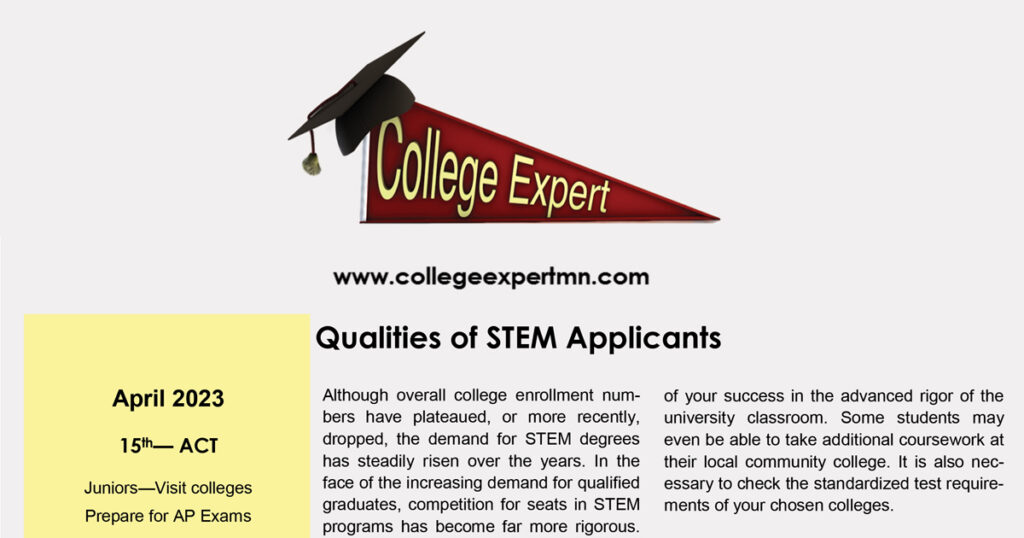
Colleges are looking beyond math and science skills to identify the most-qualified applicants for competitive STEM programs. Wondering if you have what it takes? Read our April issue! Other articles include:
Focus on Majors/Communications Studies – A path that combines liberal arts with practical training.
Financial Matters – Appealing financial aid awards.
Dealing with Denial – How to stay positive while facing disappointment.
Read the April issue.
A Visit to Seattle University
By Isaac Eng
Seattle University, founded in 1891, is a Jesuit Catholic University located smack dab in the heart of Seattle’s bustling Capitol Hill neighborhood. Nestled between cutting-edge hospitals up the street on First Hill and the lively night life scene on Broadway Ave and 12th Street in Cap Hill proper, Seattle U is correctly described by its admissions officers to be an “oasis” in the city. Seattle attracts all sorts—skiers, rock climbers, mountain bikers, techies, grunge rockers, and lovers of all things mountains and rain. Everyone seems to have a place on the dynamic Seattle U campus.
Academics
The university proudly owns its Jesuit heritage at every turn. Their mission is twofold: they aim to educate the whole student by aiding in their professional development and empowering them to be leaders pushing for a more just and humane world. The way the university tries to accomplish these lofty goals is through an emphasis on building community—between students, faculty, and business partners across Seattle.
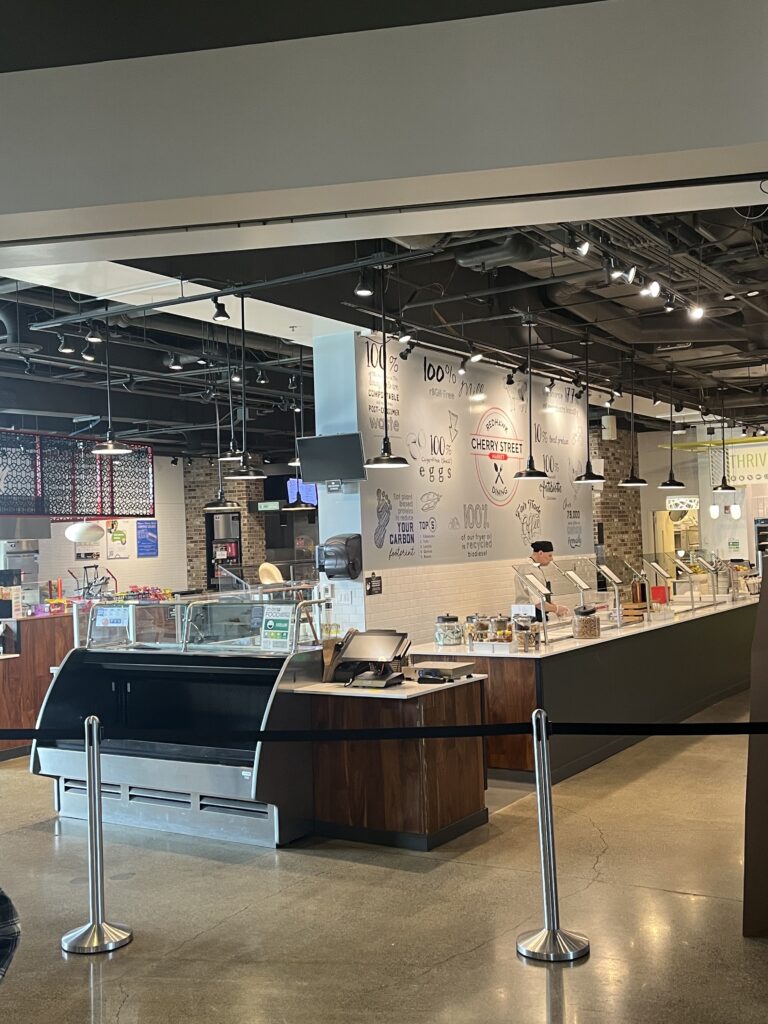
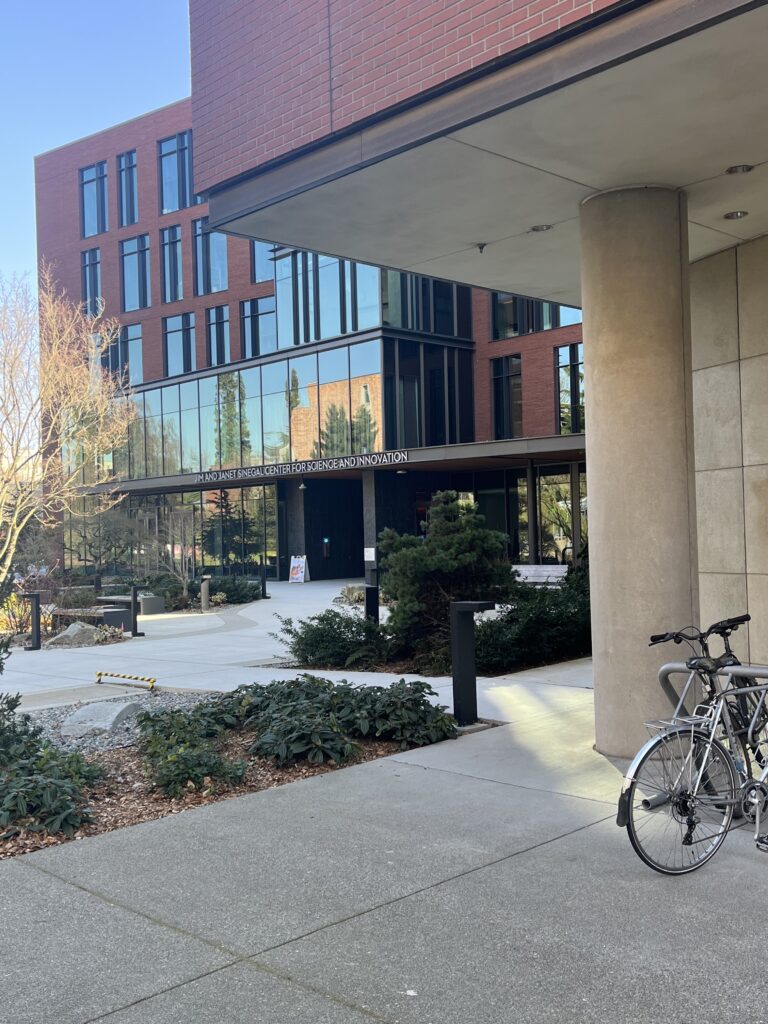
Boasting an average class size of 18 students and an 11:1 student-faculty ratio, Seattle U gives undergrads the opportunity to connect with their professors in a meaningful way. Pair this with a project-based, hands-on educational model, and direct access to internships at numerous Seattle-based non-profits, hospitals, and corporations like Boeing, Microsoft, Adobe, and Google, it’s easy to see that Seattle U offers an education that prepares students for successful careers in competitive fields.
But Seattle U isn’t just about collaborative education and career readiness, it also wants students to give back. The Jesuit tradition of community service is alive and well at Seattle U. One of the most popular campus events is the 24-hour dance-a-thon that happens once a year at the Space Needle to benefit Seattle Children’s Hospital. Outside of this event, Seattle U students regularly participate in some way in the greater Seattle community. My tour guide Seth, a 3rd year nursing student from Hawaii, said that “pretty much everyone he knows” does some sort of community outreach like this.
Campus Life
In their free time outside of class, internships, and community service, Seattle U students take part in a bustling social scene. There is no Greek life on campus, but since most students stay on campus all four years, there are always opportunities for students to connect with classmates in the dorms or on several of the beautiful quads across the tight-knit campus. Students also avidly follow (division 1) Seattle U sports, especially the soccer and basketball teams, participate in over 150 student clubs, and enjoy a campus-wide concert in the spring called “Quad Stock.” If you’re in the market for a party school, you’re barking up the wrong tree, but many other kinds of community are readily available for Seattle U students, and everyone can find their niche.
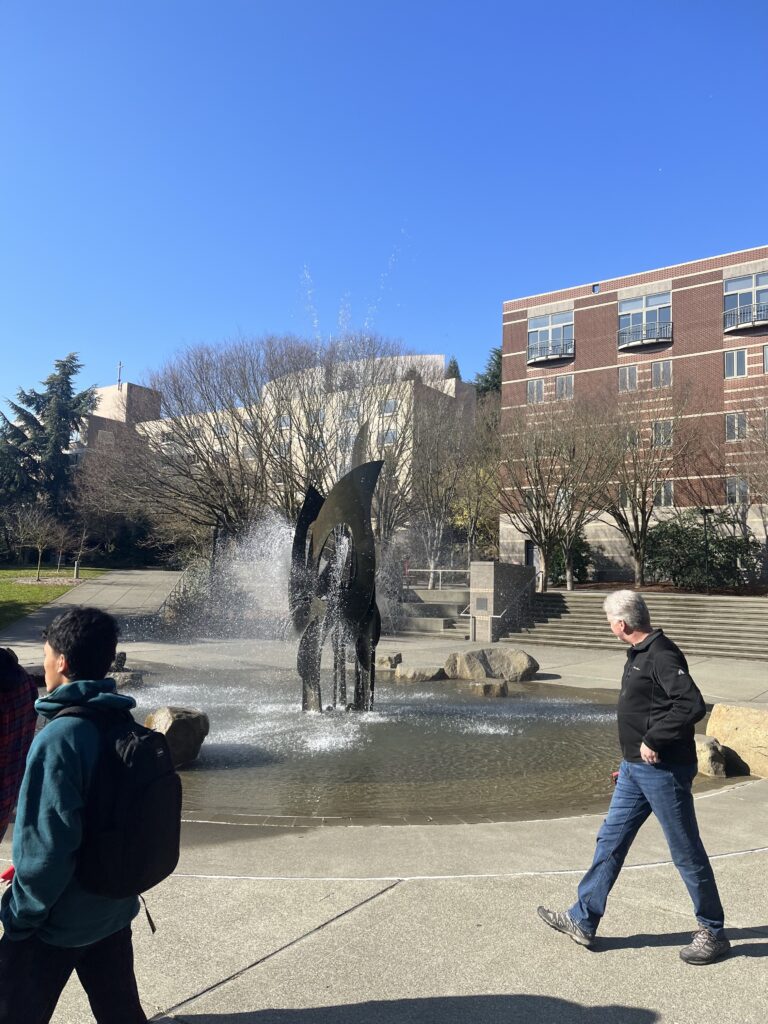
Fast Facts
- There are 4,764 undergraduate students, and 7,291 total students
- Seattle U is ranked #139 among all U.S. universities according to U.S. News and World
- Seattle U has a law school on campus
- The most popular programs on campus are nursing, business, computer science, and environmental science
- In 2021, Microsoft, Amazon, and a number of private investors gave funding to build the Sinegal Center for Science and Innovation, a cutting edge STEM facility featuring computer, chemistry, and biology labs, “maker” rooms, cafes, and study spaces in abundance
- The majority of students choose to study abroad during their four years at Seattle U
Admissions
- Acceptance rate is 82%
- Sullivan Leadership Award (full ride) available to applicants who demonstrate significant leadership experience and who complete an additional application
- 92% of students receive financial aid
- $8,000-$25,000 merit scholarships are available for students in addition to financial aid
- Test optional
- Students may apply direct entry into their major program and start fulfilling requirements on the first day – OR – students can apply for the per-major studies program and declare their major by the end of their sophomore year
- Robust core curriculum must be completed by all students prior to graduation
Final Impressions
The students that would be most happy here are those who are independently motivated and enjoy working in community. Seth, my tour guide, said “Seattle U students are always skeptical, but for good reason. They enjoy asking questions and actively seeking answers. And above all, the enjoy being involved in the Seattle community and take initiative on issues they care about.”
Rochester Student Develops App to Support Peers Who are Struggling
During her freshman year, Nandini noticed how isolation during the pandemic was affecting her own mental health as well as that of her peers. To elevate her mood, she turned to journaling, running and working out with her brother. She also began to think about how many people didn’t only struggle with mental health during the pandemic, but throughout their lives, and considered ways she could help.
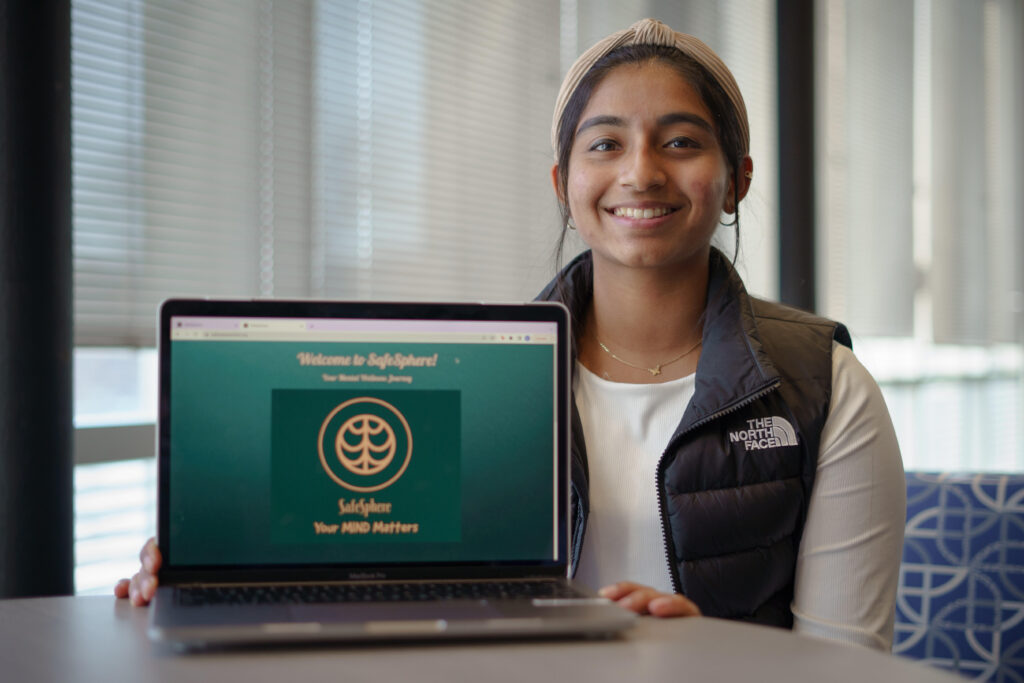
(Photo courtesy of the Post Bulletin.)
In 7th grade, she had participated in a Technovation coding camp for girls, and Nandini and her friends received valuable feedback and advanced to semi-finals for a prototype mental health app they developed. The app began to feel even more relevant to Nandini during Covid.
“Stressed students behind screens weren’t able to receive the resources they needed and extracurriculars became virtual, which confined students to Zoom,” Nandini says. “I saw that my community was struggling.”
Picking up where they had left off, Nandini continued to develop the app, SafeSphere, during her freshman year of high school with the goal of offering it on the Google Play Store and App Store and on the web. While some original team members weren’t available to help rebuild SafeSphere, Nandini continued to enlist a team of partners, including an IT expert and a child psychiatrist from Mayo Clinic, business lawyers from the University of Minnesota Law Clinic and her brother, Varun, University of Minnesota psychology major, who is helping to market SafeSphere to other college students.
The goal of SafeSphere is to assess how you are doing and then provide easy access to tools, whether you need a distraction from the daily grind or need to connect with a professional. It includes activities such as journaling; videos and podcasts on topics ranging from mindfulness to the positive impact of music to destigmatizing depression; workout videos inspired by Nandini’s own experience with the benefits of exercise; and links to mental health resources. It even includes a survey where you can “check in” regarding how you are feeling – and ask for help if you need to.
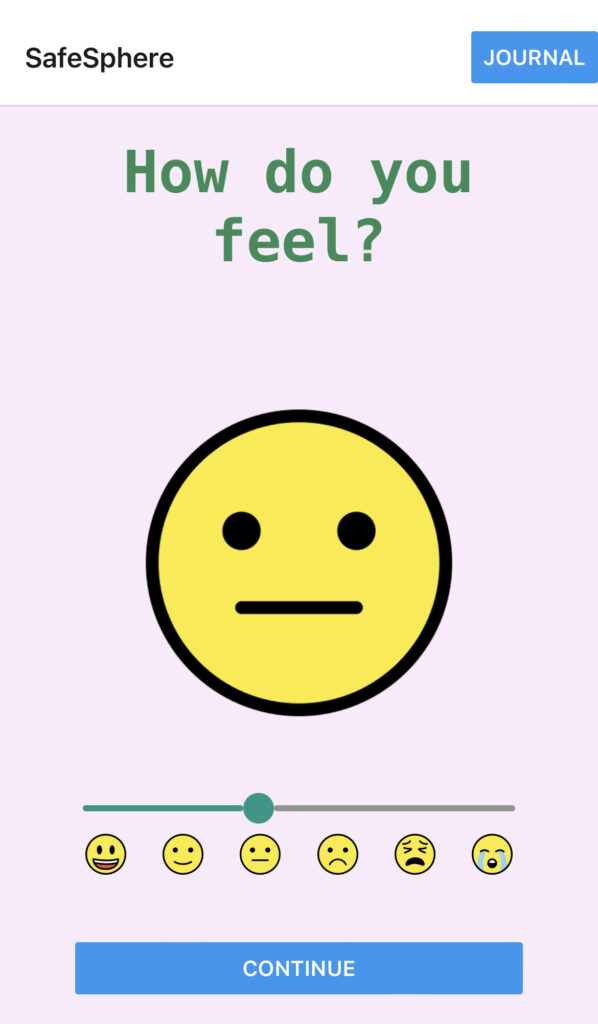
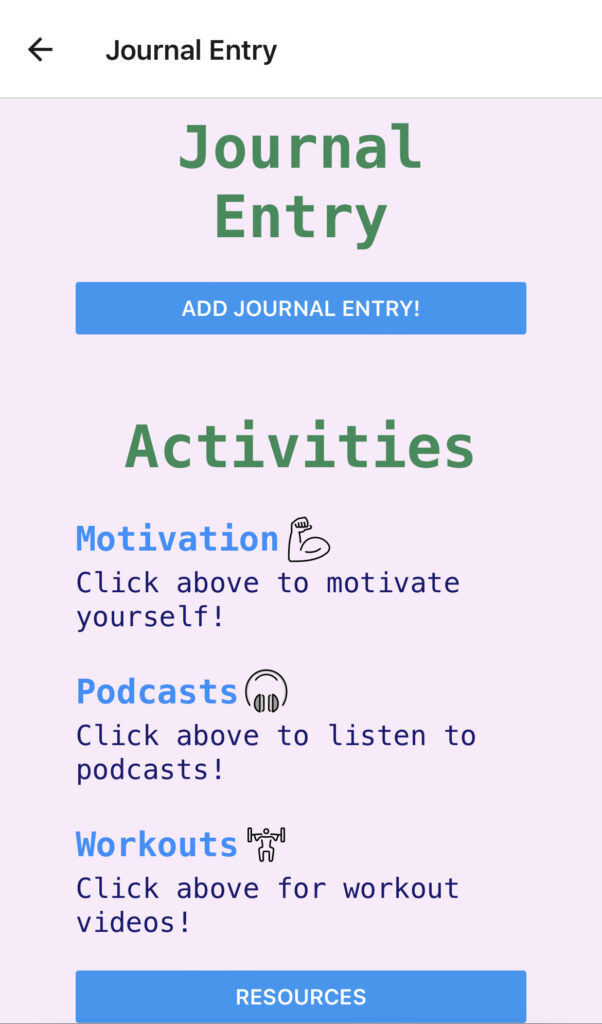

“The key is to accept that sometimes it’s ok to be “not ok”, Nandini says. “It’s important to be honest with oneself and get the support that can make all the difference.”
Now a junior, Nandini plans to build on her experience. She is exploring colleges where she can pursue a degree in Cognitive Science with the goal of a career in the mental health field.
Interested in exploring SafeSphere yourself? Visit www.safespheremind.org for a link to the web app. It also will soon be published on the Google Play Store and App Store for iOS devices.
We often encourage students to look for ways to pursue their genuine interests, whether that means taking an online class, developing a hobby or volunteering in their community. It can help them identify an academic path that excites them. It can also demonstrate the kind of initiative that colleges love.
Nandini’s journey demonstrates how diving into an interest – whether it’s coding, social activism or beekeeping – is not only rewarding, it can help you stand out during college admissions. Looking for ideas to get involved? See our suggestions for potential Unique Teen Activities or talk to your College Expert counselor!
College Spotlight on University of Wisconsin-Madison
Read Bailey’s advice for college freshmen in her College Spotlight and see if her spirited Big 10 school also has a place on your college list!
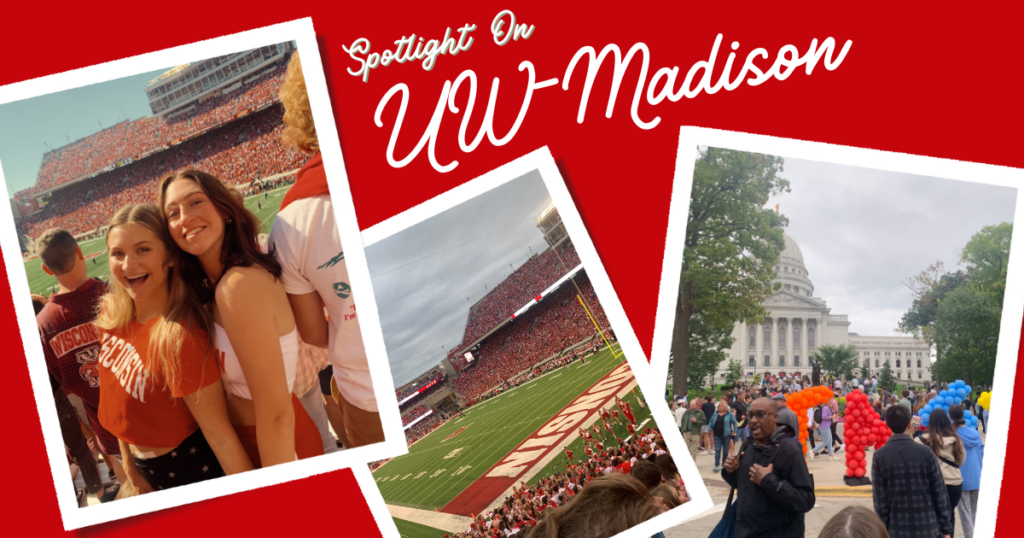
March College Expert Newsletter
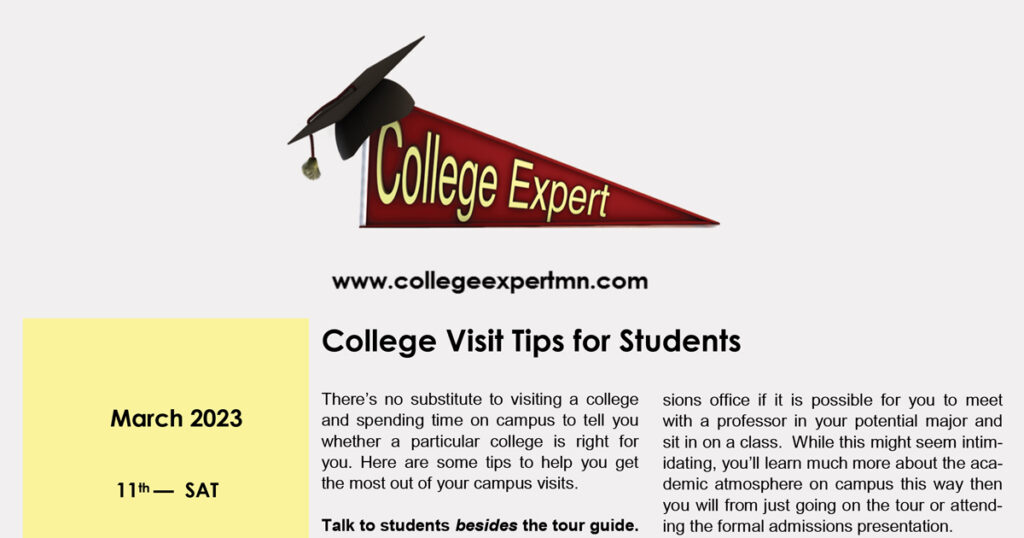
Want to really get to know a campus? Here are some tips for your next college visit. Other articles include:
Focus on Majors/International Business – Cultural competence is in demand.
Financial Matters – How to compare your financial aid packages.
Navigating the Waitlist – Increasing your chance of acceptance while waiting.
College Visit Tips for Parents – Your to-dos, and why it’s best to let your child take the lead.
Read the March issue.
A Visit to Swarthmore College
By Sue Luse
I visited several colleges in the Philadelphia area in early October, and months after my visit Swarthmore College still stands out. It is located in a beautiful suburban area, only 10 miles from Philly and with close, easy access to the airport. There is a train on campus to take students into Philly and all over the east coast, which gives students the flexibility to explore Washington D.C. and New York. Swarthmore is part of a Tri college consortium with Bryn Mawr and Haverford, which expands a student’s academic opportunities and social life, and students can take some classes at UPenn. Swarthmore is known for its Quaker roots and mission. Besides its great academic opportunities, the college’s beautiful 425-acre campus is a nationally registered arboretum with rolling wooded hills.
Academics
Swarthmore is very challenging academically, and students don’t just focus on grades there, they love to learn. They also appreciate Swarthmore’s flexible academic requirements, professors and resources. Swarthmore’s strong engineering and computer science programs are unique and hard to find at other small liberal arts universities. Students are required to take some core classes and also demonstrate foreign language proficiency and pass a swimming test. Freshman at Swarthmore are graded on a pass-fail system their first semester to reduce stress, and there is no class rank or dean’s lists. Courses are very challenging, but Swatties are known to be more collaborative than competitive. Class sizes are intimate, with 73% having less than 20 students, and they are taught by professors. Swarthmore does have an honors program that features independent study with written and oral exams like a PhD program. It is among the top 5 colleges in the nation of graduates that earn PhDs.
Campus Life
The Swarthmore community is a family of students who not only engage in learning, but are politically active and demonstrate civil responsibility. There is no typical Swattie, but everyone is brilliant with unique talents and interests. They are proud to be called nerds, and they are very diverse and liberal. Many are involved in the arts, 86 percent are from out of state and 15 percent are international. There are no Greeks, which students love. Sports are Division III and more low-key.
Students from all class years live together in housing, and the campus is cash free, which is a part of the Quaker philosophy. Ninety-five percent of students live on campus all four years, and housing is guaranteed all four years. Swatties love their dorms, each with their own personalities and traditions. Thirty-five percent of students study abroad, and 75 percent do independent research with professors. Annual traditions include the Primal Scream at midnight before finals and decorating the library with toilet paper.

Fast Facts
Enrollment is about 1700 students, a size the college plans to keep because it is the perfect for student involvement and professor interaction.
Great food
Free laundry
Events are all free
A diverse campus
67% students of color
Students have intellectual curiosity, love to learn
Students are not allowed to declare majors (even engineering) until the end of sophomore year
20 of 32 credits are outside of your major
Engineering students can double major
Admissions
Regular decision acceptance rate is approximately 6%
Early decision (ED) acceptance rate is approximately 23%
Half of the class is filled by ED applicants
ED applicants have increased 26 percent in recent years
Only about 50 students are deferred
Your academic profile is more important than test scores
Admissions has been test optional for 5 years
In 2021-22, 48 percent of students applied test optional; 39 of those students were admitted
The yield rate is 43%
Admissions is need blind
Swarthmore uses the Common App and has only one required supplement about taking intellectual risks and being intellectually challenged.
Who would be happy here
Students looking for challenging academics and an intense intellectual atmosphere. If you love talking about philosophy at 4 am, you would love Swarthmore. If you are looking for a liberal, multicultural, close-knit, politically active campus, this might be the right place for you. Learn more here: https://www.swarthmore.edu.
College Spotlight on St. Olaf College
Lilly’s first semester included environmental studies, backpacking adventures and “just the right amount of freedom.” Looking for a Midwest liberal arts college? Learn more about St. Olaf in her College Spotlight!

Seven Great Ways to Get to Know a College
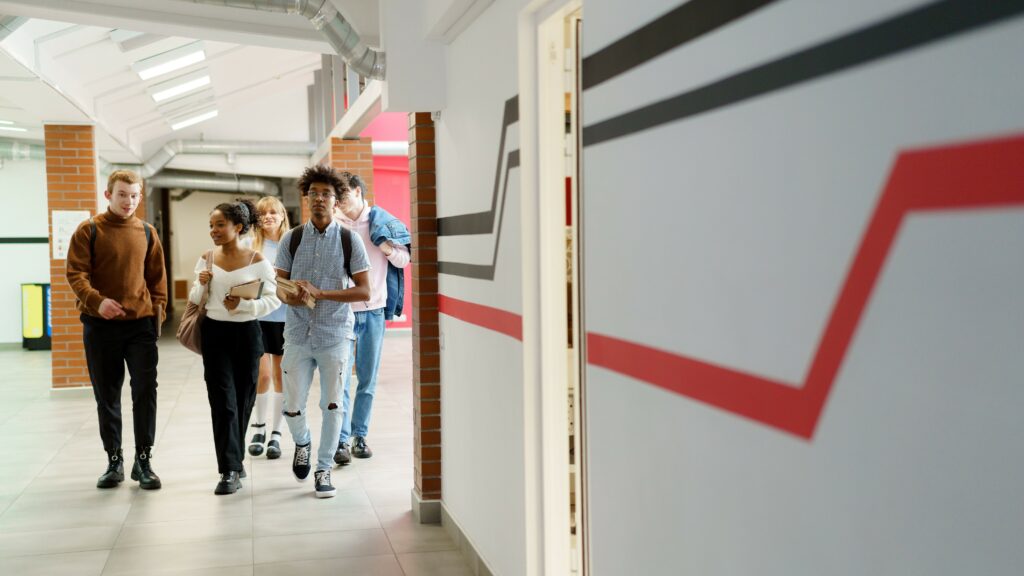
It’s never too soon to start researching colleges. If you’re college bound, then it’s time to begin. The better you understand your options, the easier it will be to build a college list that excites you and one in which you feel confident. Not sure where to start? There are a number of ways you can learn about a campus to determine if it is the right fit for you.
Colleges responded quickly to develop virtual options for students who couldn’t visit campus due to Covid-19. As a result, there is an abundance of opportunities for you to get to know campuses across the country in addition to in-person tours and information sessions. In fact, there have never been more resources to explore colleges. At College Expert, we’re also available to help. We have visited literally hundreds of colleges in person. If you have questions, just ask! We can give you the inside scoop – or refer you to a student who can.
Here are our tips for doing college research:
Take a virtual tour or attend a virtual event. You can easily find links on a college’s website. Virtual experiences can be both taped and live and range from guided tours to information sessions, Q&A panels and one-on-one sessions. Live events typically require you to register in advance, but taped events are accessible anytime.
Visit a college’s website. A college’s website is always a great place to start. In addition to finding general information about enrollment, admissions stats, campus life and housing, dig into academic departments and browse courses offered, professor bios and undergraduate opportunities like research in your potential major. Look for what makes a college truly stand out to you.
Visit the campus in person. Many colleges are now welcoming students and families back on campus for in-person visits. This is often the best way to find out if a college is a great fit for you. Campus tours generally require pre-registration, so be sure to check the website and hold off making travel plans until your registration is confirmed. In place of a student-led group tour, you may also have the option of doing a self-guided tour using a walking guide or downloaded app.
Follow your colleges on social media. You can learn a lot about campus life on platforms like Instagram, Twitter and Facebook and Snapchat. Some accounts are run by students or feature student takeovers, which will help you get an authentic view of campus. It’s a great opportunity for you to keep up to date with schools or departments, organizations, sports teams, and even professors whose work you admire.
Use online resources and apps. Listen to first-hand student testimonials and tours through websites like CampusReel, College Scoops and YouTube. College Expert students also have access to all the resources in their Custom College Plan, which includes links to guides such as The Fiske guide, Niche and Big Future.
Sign up for a college’s mailing list. Once you sign up, you’ll receive emails from the college as well as notifications of virtual events. An added bonus, a college will track if you’ve requested information and opened their emails, and this can work in your favor because it demonstrates interest.
Talk with current students or alumni. Ask parents, family friends, teachers and others about their college experiences. An admissions office also may be able to put you in touch with a current student so you can get their perspective. Or ask us – we may be able to connect you with a student who attends that school. We also post College Spotlights written by our former students on the blog on our website.
Getting to know a college using these resources will help you to feel informed, confident and excited as you build your list and anticipate going off to college. It’s time to get started!
A Visit to Grinnell College
By Sue Luse
We love sharing hidden gems with students. One of the benefits of working with us is we often can identify colleges that are just the right fit for a student but that may not be on their radar. Grinnell College is just that kind of school. With an enrollment of only 1,700 students, Grinnell is a small campus with a lot to offer.
Located halfway between Des Moines and Cedar Rapids, Grinnell often ends up on a college list alongside higher-profile east coast schools, such Vassar, Williams and Amherst. It’s a great fit for students who are serious about academics but who think they would prefer an atmosphere where “they can breathe” and enjoy a more relaxed college experience.
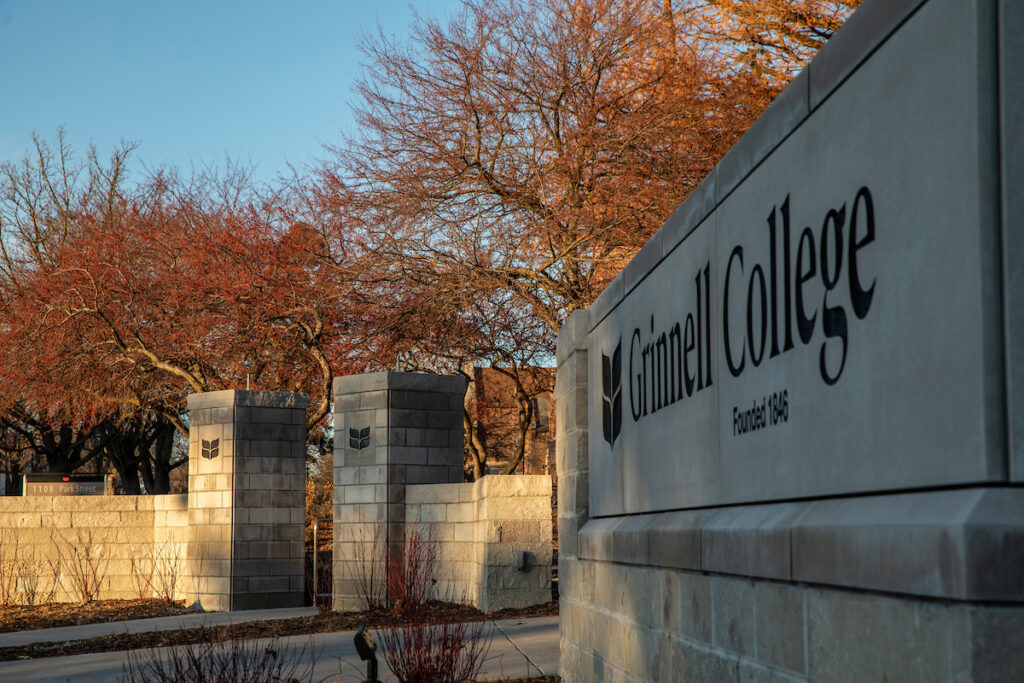
One hallmark of Grinnell’s curriculum is flexibility. As stated on its website, “Here you are in charge of how your studies take shape and where you want them to take you.” There is no language, math or science requirement. Instead, Grinnell’s open curriculum, which includes only one required class outside of a student’s major, gives students a lot of freedom to explore their interests and design their own plan with the guidance of an academic advisor.
Grinnell also is known as an inclusive campus with a strong commitment to social activism. Students at Grinnell tend to be liberal and progressive. They love the opportunity to be on the front lines in a red state fighting for things like reproductive and gender rights and to become involved to ensure their voices are heard. When it comes to social issues, Grinnell students aren’t afraid to take a stand and challenge “the way things are.”
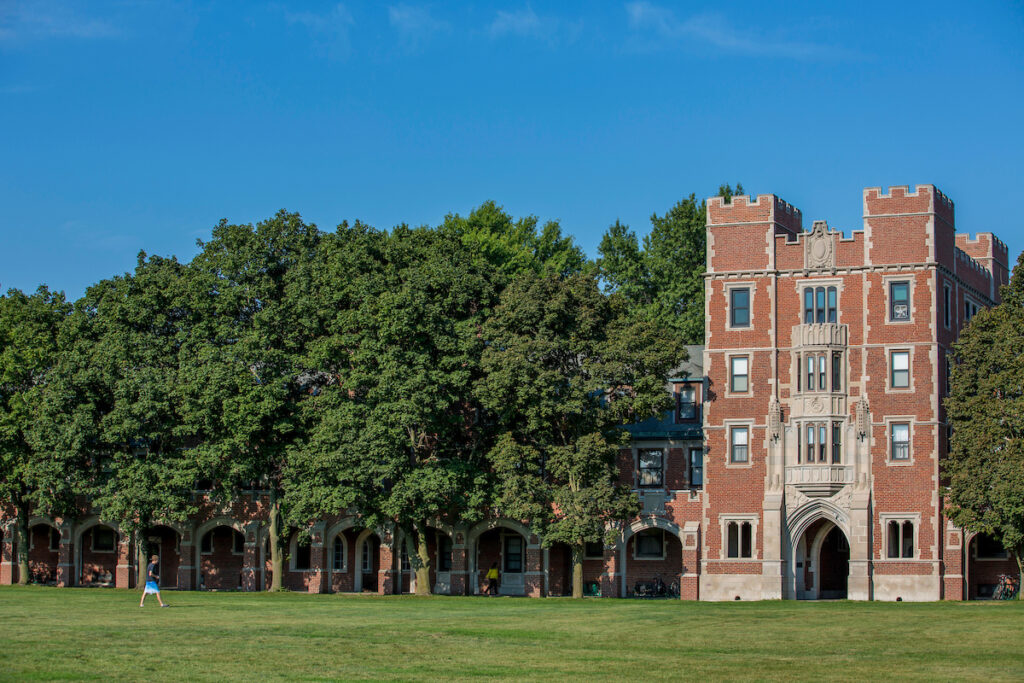
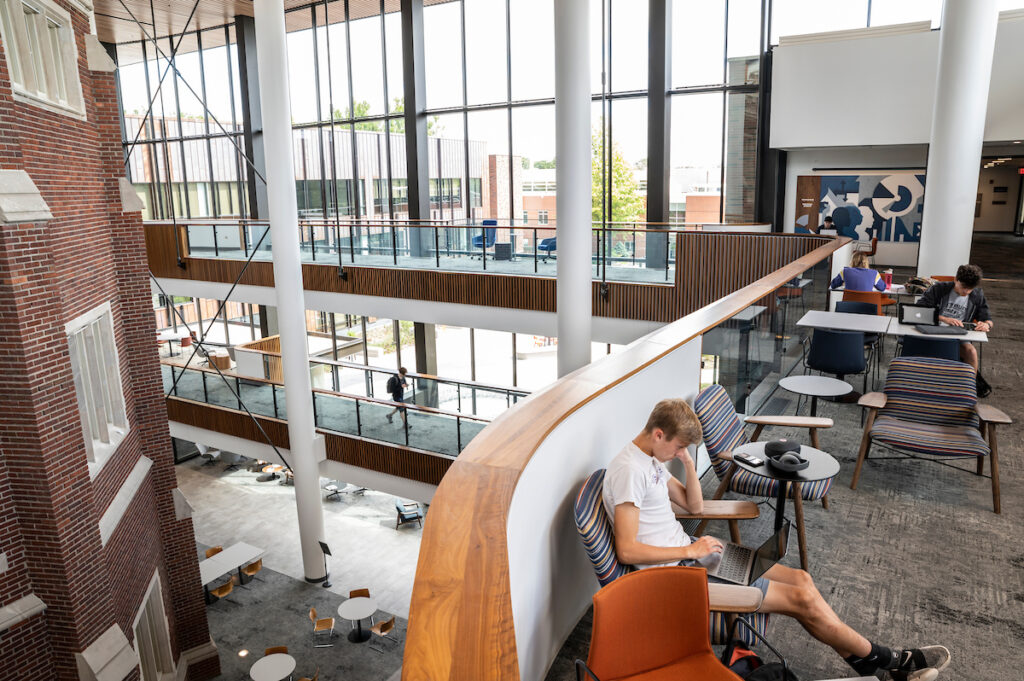
Admissions Fast Facts:
Here are some admissions facts about Grinnell:
- 50% of the class is accepted Early Decision; there is no Early Action
- All domestic students accepted Early Decision receive, at minimum, a $10,000 scholarship, renewable for four years
- Accepted students can receive up to $30,000 in merit aid
- The acceptance rate is around 10%
- Accepted students have mostly As and an average 30-34 ACT score
- Deadlines are: ED – Nov. 15, ED II – Jan. 1, Regular Decision – Jan. 15
- 94% of students are from out of state (the highest number are from NY and CA, but many also are from MN)
- Admissions is need blind for domestic students; need aware for international applicants
- Grinnell meets 100% of demonstrated need without loans
When reviewing applicants, Grinnell considers demonstrated interest, so you should connect with the college and your admissions representative. Be sure to introduce yourself when they visit your school, tour the college in person if you can, attend virtual events, sign up for an interview and open any college emails you receive. These actions will let admissions know you are a serious applicant.
Academics
Grinnell is known for great professors, engaging discussion-based classes, and research opportunities with professors and internships all over the world, including computer science internships in Silicon Valley. Students don’t just learn how to code; they study ethical issues in society and how to become leaders in STEM technologies. Other popular majors include Biology, Psychology. Economics and Political Science.
Campus Life
The Grinnell campus is a tight-knit community with opportunities to get involved in music, theater, journalism and athletics, including club sports and intramurals. There are no fraternities and sororities, but there are more than 100 clubs and organizations ranging from debate and ultimate Frisbee to niche interests like a drone team and beekeepers club. Grinnell’s excellent theater and music program are open to all students, and there is strong interest and participation in Black Student Union. There also is a lot of support for the LGBTQIA+ community on campus and through the Stonewall Resource Center
Grinnell students are required to live on campus their first three years and are guaranteed on-campus housing all four years. On weekends, about 95% of students stay on campus. The school offers coed housing and housing for students with disabilities.
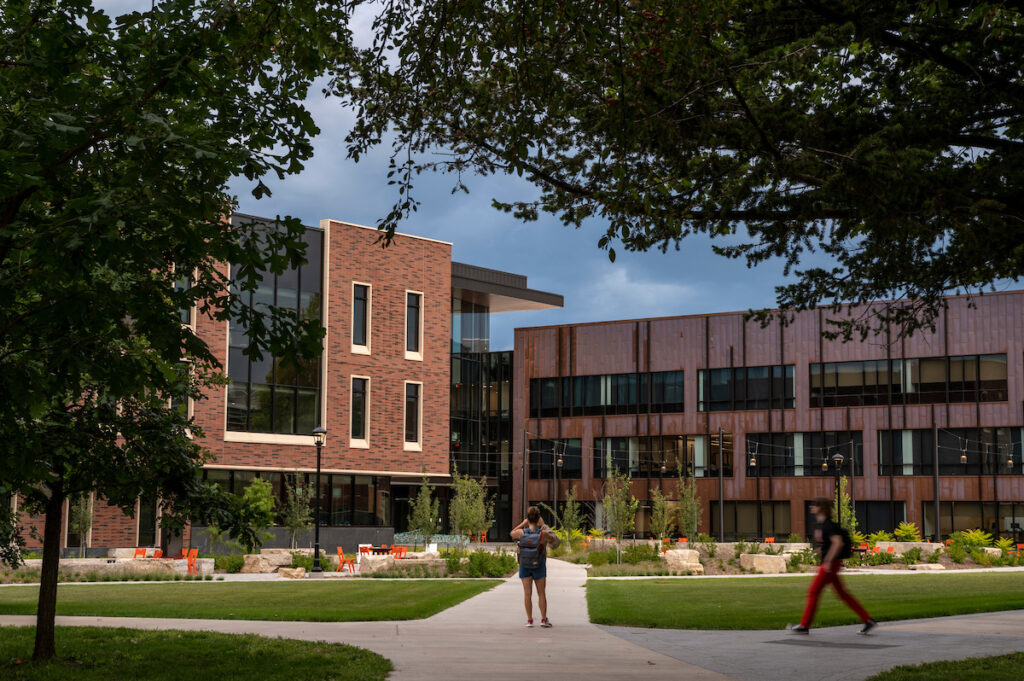
Tuition
Eighty-nine percent of students receive aid to help pay for their years at Grinnell. Grinnell meets 100% of each student’s demonstrated need through student employment, grants and scholarships, so students don’t have to rely on loans. Sixty-five percent of students receive need-based aid and are eligible for, on average, a $52,847 grant/scholarship.
Who would be happy here?
Grinnell is a great option for students who are looking for a break from city life as well as a challenging, yet down-to-earth, liberal arts college. The freedom to create your own academic path appeals to students who are independent and have a wide range of interests. Grinnell also is a great fit for students looking for a liberal and gender inclusive campus with a lot of opportunities to get involved in social and political activism.
Are you a College Expert student interested in exploring Grinnell College? Visit https://www.grinnell.edu/ to learn more and talk to your College Expert counselor about whether it’s a good fit for you.
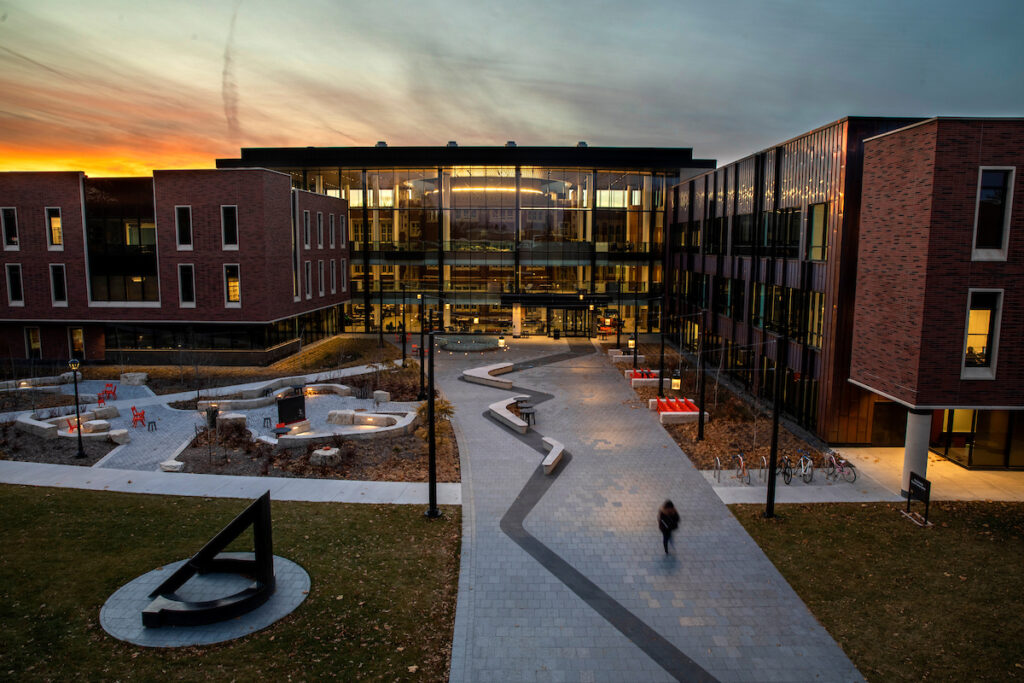
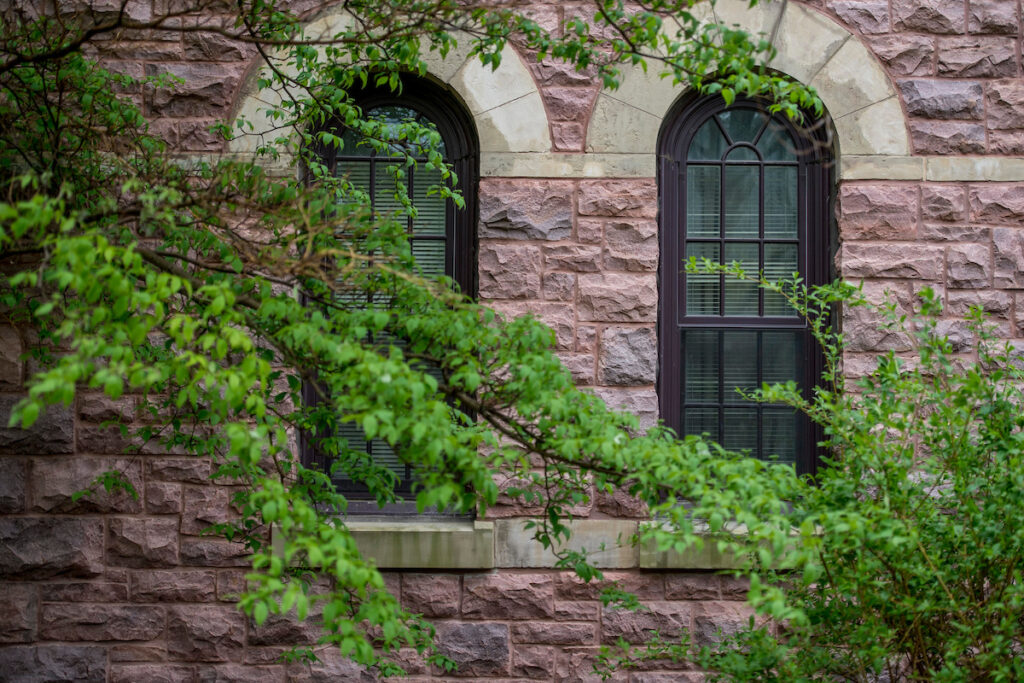
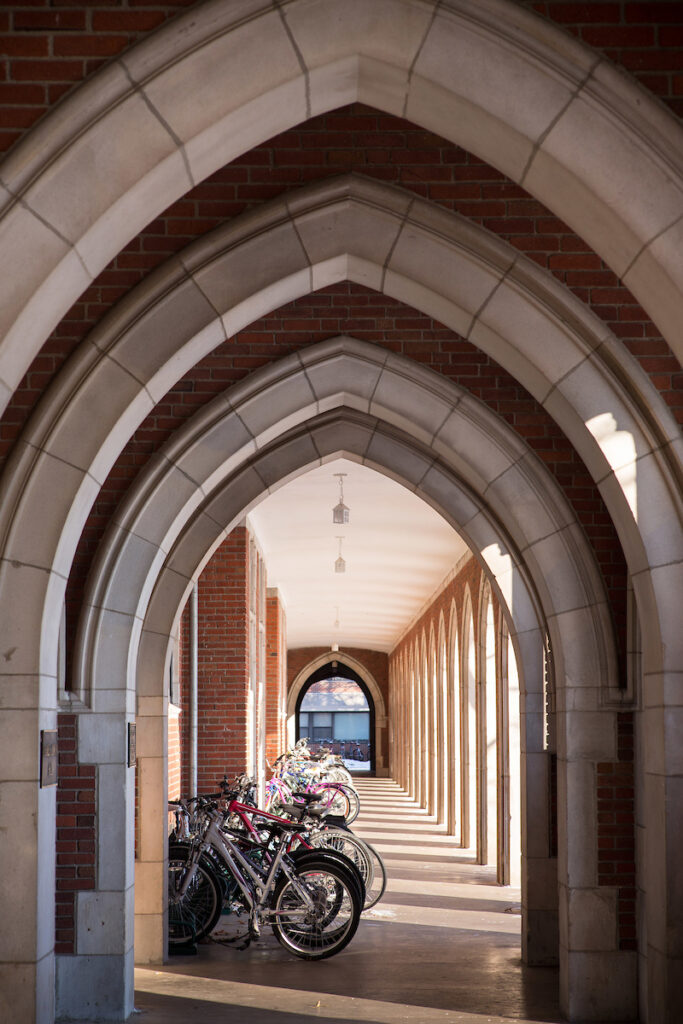
December College Expert Newsletter
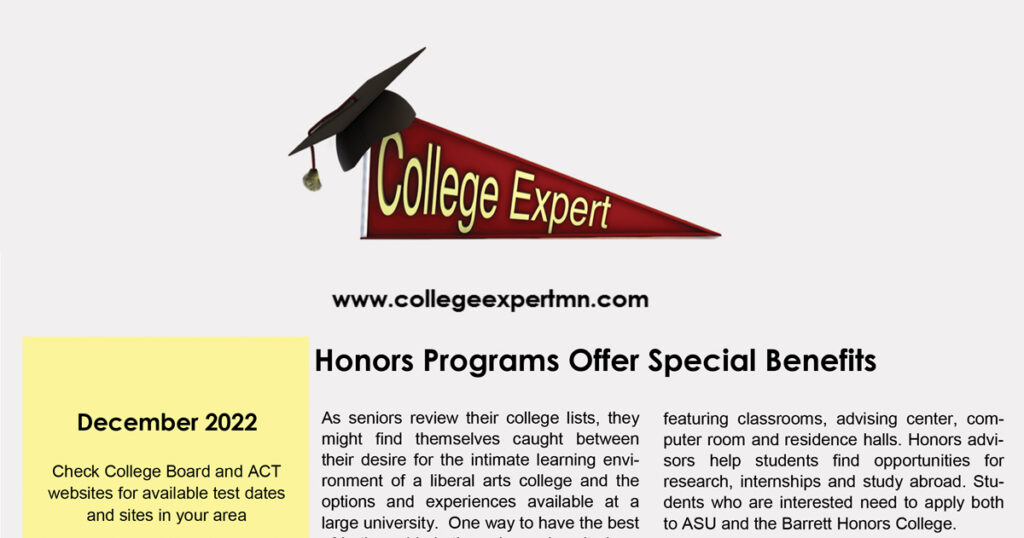
Considering an honors program or college? The benefits go beyond a diploma designation. Read about the perks of undergraduate honors. Other articles include:
Focus on Majors/Biomedical Engineering – An aging population is driving demand in this field.
Financial Matters – Writing your way to a college scholarship.
Early Admission Decisions – What you need to do once early decisions roll in.
Character Counts – An epidemic of cheating could be hurting students.
November 2022 College Expert Newsletter
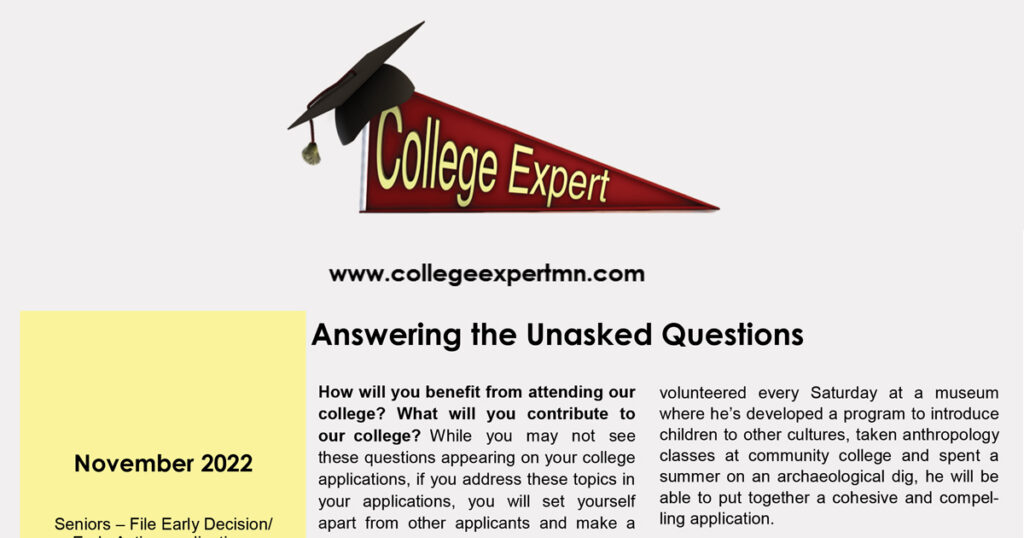
While they may not ask specifically, colleges want to know how you’ll contribute to campus. Read our tips for making your case. Other articles include:
Focus on Majors/Peace and Conflict Studies – A field that’s part theory, part hands-on experience.
Financial Matters: Do you need to submit the CSS Profile?
Impact – It’s an admissions buzzword, but what exactly are they looking for?
Acing that College Interview – How to prepare…and why you don’t need to worry.
Read the November issue.
October 2022 College Expert Newsletter

You want to provide a complete picture, but should you address low grades or a learning disability in your application? Here are some guidelines to help you decide. Other articles include:
Focus on Majors/Kinesiology – A field for those interested in science, health and exercise.
Financial Matters: It’s Time for the FAFSA.
Avoiding College Application Mistakes – How to avoid careless mistakes before you hit submit.
Should You Apply Early Action? – Common questions related to this non-binding option.
Read the October issue.
10 Tips for Planning Your Fall College Visit

If you’re planning to tour colleges during the long MEA weekend, good for you! It’s a great time to experience campus while school is in full swing and bustling with students. However, to get a thorough experience so you can truly weigh if it’s a good fit for you, you want to do more than just check out the library and dining hall. A meaningful visit involves a little planning before you go. Here are some tips for making the most of your time on campus.
1. Visit a variety of colleges
Carefully choose a variety of colleges to visit and make sure you have some “reach” colleges, schools where you are likely to be accepted, and affordable colleges that fit your budget. Visit a large public university, a small private college, an urban campus, and a college in a small town to get a sense of what feels right to you. If you can’t fit them all in now, consider planning additional visits over spring break.
2. Schedule your visit in advance
Most colleges offer morning and afternoon information sessions and tours year-round, Monday through Friday. They may have special visit days, and sometimes they offer visits on Saturday mornings. Sign up as soon as you can, a month ahead of time is ideal, and be sure to spend at least a half day at each college. You can visit two colleges a day if you plan it right.
3. Learn about the college beforehand
Read material from the colleges you are visiting and check out their websites and social media accounts. Look for things that interest you that you may want to learn more about while you are there. Doing some research ahead of time may prevent you from asking a question that is clearly answered on their website, such as whether they have an engineering program when the website shows they do.
4. Explore the college community
When you are visiting an out-of-town college, stay at a hotel close to campus, and check out local restaurants, shops, and recreational activities. As a student, you will spend most of your time on campus, but the surrounding community may still play a part in the overall fit. Drive by the admissions office ahead of time so you know where it is and where you can park. Make sure you have the address for the information session/tour, not just the general campus address. It is usually held at the admissions office, but not always.
5. Participate in the information session
Information sessions are usually led by an admissions counselor who will give an overview of academics, campus life and admissions. Ask questions that help you clarify the academic programs that interest you and the type of student who is most comfortable and successful there. Pay close attention to the admission requirements and deadlines.
6. Take the student-led campus tour
Take advantage of the opportunity to learn about campus life on the student-led tour. A student can provide insight about the social scene, school spirit and the overall fit. Find out if students stick around on weekends. If you visit a dorm, picture yourself living there. Pay attention to the library and other study areas where you would spend a lot of time. Most importantly, ask yourself, can I relate to the students here?
7. Explore campus life beyond academics
If you are an athlete, checkout the athletic facilities. If you are a performing arts student, check out the theater and concert halls. Look for clues about what campus life is like. Every tour will take you to the student center where students eat and hang out. But investigate further. Read notices posted in the dorms or on bulletin boards. Read articles in the student newspaper. Can you see yourself there?
8. Eat lunch in the student center; watch student interactions
Observe the students. Are they sitting by themselves looking at their phones or are they laughing and talking with each other? Do you feel comfortable among them? What do you think of the dining options? Feel free to strike up a conversation with a student. Let them know you are touring and ask for their impression of the college. Most are glad to share their insight and will appreciate being asked!
9. Arrange for campus meetings in your areas of interest
Learn as much as you can while you are on campus. For example, the admissions office may be able to help you set up a meeting with a coach or, if you are a musician, with the music department. Occasionally they will also let you sit in on a class. If you know a classmate attending that college, try and find a time to meet with them and get their impressions as well.
10. Write down your impressions; send a thank
If you don’t stop to record your thoughts, different schools may begin to blur together. Keep a list of pros and cons for comparison. (Consider taking photos to help you keep track of the campuses you visit.) Evaluate the campus environment. Is it too big or too small for you? How would you get around campus – particularly in the rain or snow? Is it easy to get home? If you apply to that college, you may need to write an essay about why you would like to attend. If necessary, you can revisit your notes for details you may have forgotten.
After you’ve completed your visits, don’t forget to send a thank-you email to your assigned admissions counselor letting them know you visited the campus. Refer to your notes, and reinforce what you loved about the school. Finally, make your college visits as memorable and enjoyable as any vacation. Be a tourist, go to interesting restaurants, take in athletic events or theater productions, see the local sights and enjoy spending time with your family.
Visit www.collegeexpertmn.com for more information about college visits and college planning.
September 2022 College Expert Newsletter

What do college admission officers really look for? Hint: It’s more than grades and test scores. Read our tips for making the most of high school. Other articles include:
Focus on Majors/Chemistry – A field for problem solvers and analytical thinkers.
Financial Matters – Studying out-of-state at in-state prices.
Do Safety Schools Really Exist Anymore? – Why you should treat every school like it is your first choice.
Considering Early Decision? – The pros and cons of this binding decision.
Read the September issue.
Congratulations Class of 2022
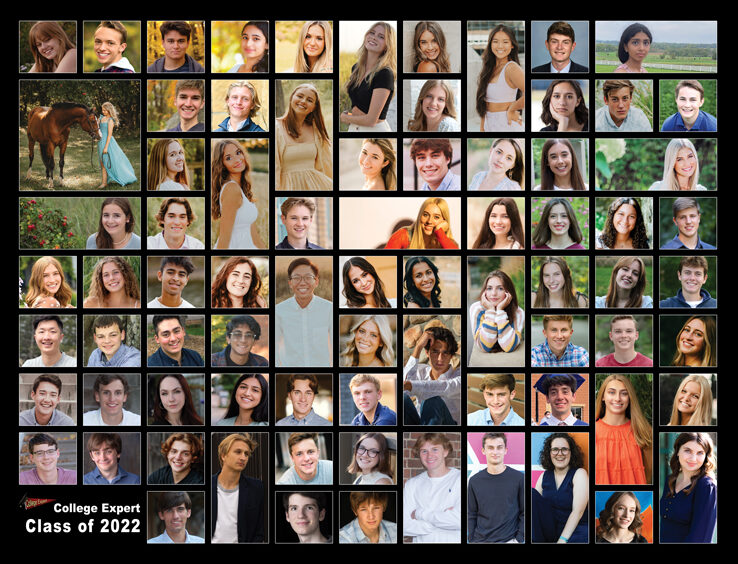
Congratulations Class of 2022! It seems like we were just guiding you through your college applications and essays, and look at you now! While the school year was somewhat more “normal” this year, we know you had your share of challenges. But through them all, we watched you learn, grow and discover what’s important to you, and we can’t wait to see what you do with that knowledge. Best of luck, graduates. We are confident in you and are rooting for you. – The College Expert Team
Character Counts: Why Personal Qualities are Gaining Importance in College Admissions

While admittedly subjective, “character” counts in college admissions. With many colleges abandoning or making optional SAT and ACT test scores, assessing applicants holistically has become an even greater focus, and a student’s ability to demonstrate character has become just as important as demonstrating leadership, intellectual curiosity and achievement.
While character is an abstract concept, we find many students are intrigued to have a conversation with us about character as part of our college planning process. Even those with an initial reaction of “Oh, no…something more to add to my busy schedule” come to appreciate the fact that colleges want a complete view of who they are as a person beyond their grades and test scores. They welcome the opportunity to develop and show through their essays, activities list, supplements and letters of recommendation that they have qualities like grit, resilience and compassion.
The highly-selective colleges, in particular, are turning away from an emphasis on personal success by seeking students who make meaningful, ethical contributions to the common good. Harvard has much to say about this topic, including: “How open are you to new ideas and people? What about your maturity, character, leadership, self-confidence, warmth of personality, sense of humor, energy, concern for others, and grace under pressure?”
Duke’s website is crystal clear about what their Admissions Office is seeking in a candidate: “Duke offers a multitude of opportunities to its undergraduates. We’re looking for students ready to respond to those opportunities intelligently, creatively and enthusiastically. We like ambition and curiosity, talent and persistence, energy and humanity…We especially appreciate students who love thinking hard about things and who like to make a difference in the world.”
And then there’s Boston College: “We seek students who are bright, curious, passionate and engaged. As a Jesuit university, Boston College emphasizes liberal arts education, character development and the cultivation of leaders. Our mission is to graduate men and women who know how to think, make decisions, communicate and act with integrity.”
How do we at College Expert encourage our students to think about character-building in high school? First, we inform our clients of the priority that colleges place on the concept. Then at every meeting we touch on character development as part of the college planning agenda.
Here are some ideas we share with our students:
- Find a problem you see in your school, and try to fix it. One of our students noticed that the special needs kids washed the lunch tables every day. She found the practice to be unsettling and successfully approached the school administration to create change.
- Start something new and leave a legacy. Another student started a Fishing Club at his high school, eventually expanding the club to include middle and elementary school students.
- See a need? Think of it as an opportunity. With encouragement, our budding writers and artists have launched literary arts magazines and poetry slams at their schools.
- Look for genuine ways to show gratitude and kindness. Make friends with the lunch ladies, custodians and bus drivers. Reach out to that kid who needs a friend.
- Find a cause that you genuinely care about. It does not have to be an epic adventure but can be local and on a small scale. Just take initiative – colleges love to see students who make things happen.
- Get to know your teachers. With their guidance, dive deeper into subjects that interest you. We remind our students that they will be asking some of the same teachers to write letters of recommendation. What better recommendation than from a teacher-mentor?
We view our roles as that of guides—helping students navigate through an enjoyable secondary school journey while evolving into the best possible applicants. Character-building is not just for college applications, but rather for the goal of becoming long-term contributors to society.
College Expert students, if you want to learn more about how to build character as well as demonstrate your character strengths to colleges in your application, contact your College Expert counselor.
June 2022 College Expert Newsletter
Starting a business that matches your interests is a great way to make the most of your summer – and colleges will love your initiative. This month, we share steps for getting started. Other articles include:
Focus on Fashion Design/Merchandising – Careers paths in this fast-paced, creative industry.
Financial Matters: Legal limitations once your student turns 18.
Adjusting to College Life – Preparing for the surprises that come with freshman year.
Read the June issue.
A Visit to High Point University
By Sue Luse
Extraordinary. After spending an afternoon touring the High Point University campus, I can’t think of a better word to describe it. While I’ve visited hundreds of colleges, many of them more than once, the High Point University campus always makes an impression. When Dr. Nido R. Qubein took over as president in 2005, he made a commitment to transform the university and invest in academic programs, scholarships, facilities and residential communities. From the spacious dorms, to the 90,000-foot Slane Student Center, to the piped-in classical music and campus ice cream truck, you immediately sense there is something different about this campus.
The Premier Life Skills College
High Point University is located in High Point, North Carolina, about 30 minutes from both Winston-Salem and Greensboro. Its tagline is “The Premier Life Skills College,” and its call to action is simple and profound: Choose to be extraordinary. All incoming freshman take The President’s Seminar on Life Skills, taught by Dr. Qubein himself, to ensure they not only grow academically but also develop competencies critical to today’s workplace: communication, coachability, fiscal literacy and service. HPU’s website states the university “has a healthy obsession for connecting the foundation-building liberal arts education with career-focused outcomes.” HPU delivers on this promise.
The university’s programs focus on learning by doing and are complemented with experiences like internships, undergraduate research, global education and service. Classroom learning is reinforced with dynamic resources and opportunities: makerspaces for its engineering students; a business competition where winners receive funding for their start-up ideas; a planetarium where, beyond astronomy, visitors can “fly through” 3D models of the human body; and a biometric lab in the School of Communications used to measure responses to marketing messages. Every student at HPU also develops a four-year life skills and career plan that includes tasks like self-assessments, job shadowing, resume writing and networking.
Some Facts about High Point:
- Undergraduate enrollment is about 4900
- Students come from 45 states and 32 countries; 73% are from out-of-state
- The campus sits on 520-acres; it includes 122 buildings, 27 gardens and 6 swimming pools
- The HPU Panthers compete in NCAA Division I athletics in 16 sports
- HPU has 10 schools and colleges; it offers 60 majors and 63 minors
Clubs, Sports and Campus Life
With its expansive grounds and amenities, campus life is a big part of the HPU experience. In fact, students tend to stick around on the weekends, and with so much to do, it’s easy to see why. With its fitness and recreation facilities including basketball courts, weight rooms, a climbing wall, outdoor swimming pool and sand volleyball courts, the Slane Student Center is a hub of activity. The Greek system is popular, and students love to gather and cheer on HPU’s NCAA Division I teams (tickets are free to students) or compete in intramural or club sports. With more than 100 clubs and organizations ranging from student government and spiritual groups to the performing arts, students have plenty of opportunities to be involved on campus.

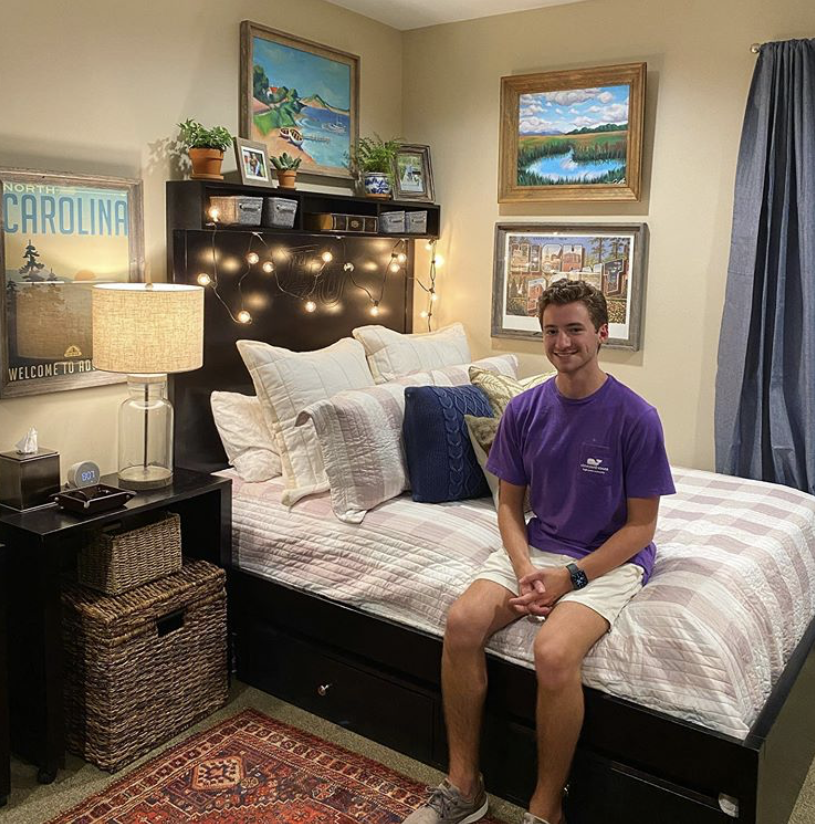
Admissions
High Point University has a Nov. 1 ED deadline, Nov. 15 EA deadline, Feb. 1 ED II deadline and March 1 Regular Decision deadline. Its admissions policy is test optional. The acceptance rate for HPU is about 72%. Characteristics of the Class of 2025 include:
- An average unweighted GPA of 3.39
- A SAT average score of 1281
- An ACT average composite score of 27
- Class composition of 57% female, 43% male students
- 62% public high school graduates; 38% private high school graduates
Popular majors are: Business, Communication, Biology, Psychology and Exercise Science.
Often students who apply to High Point also consider the College of Charleston, Furman University, Baylor University, Texas Christian University (TCU), Southern Methodist University (SMU) and University of Richmond.
Tuition and Fees
The cost of tuition, fees, room and a dining plan is about $58,000 per year (for Tier 1 housing only; there is an additional investment for upgraded housing options). Institutional aid reduces these expenses for many students.
High Point University offers a variety of housing options ranging from double-occupancy rooms (Tier 1) to single and multi-bedroom apartment suites and townhomes. Upgrades from Tier 1 can be anywhere from approximately $4,000 – $12,000 per year. The highest-level residences are impressive and include full-sized beds, granite countertops and an outdoor fire pit.
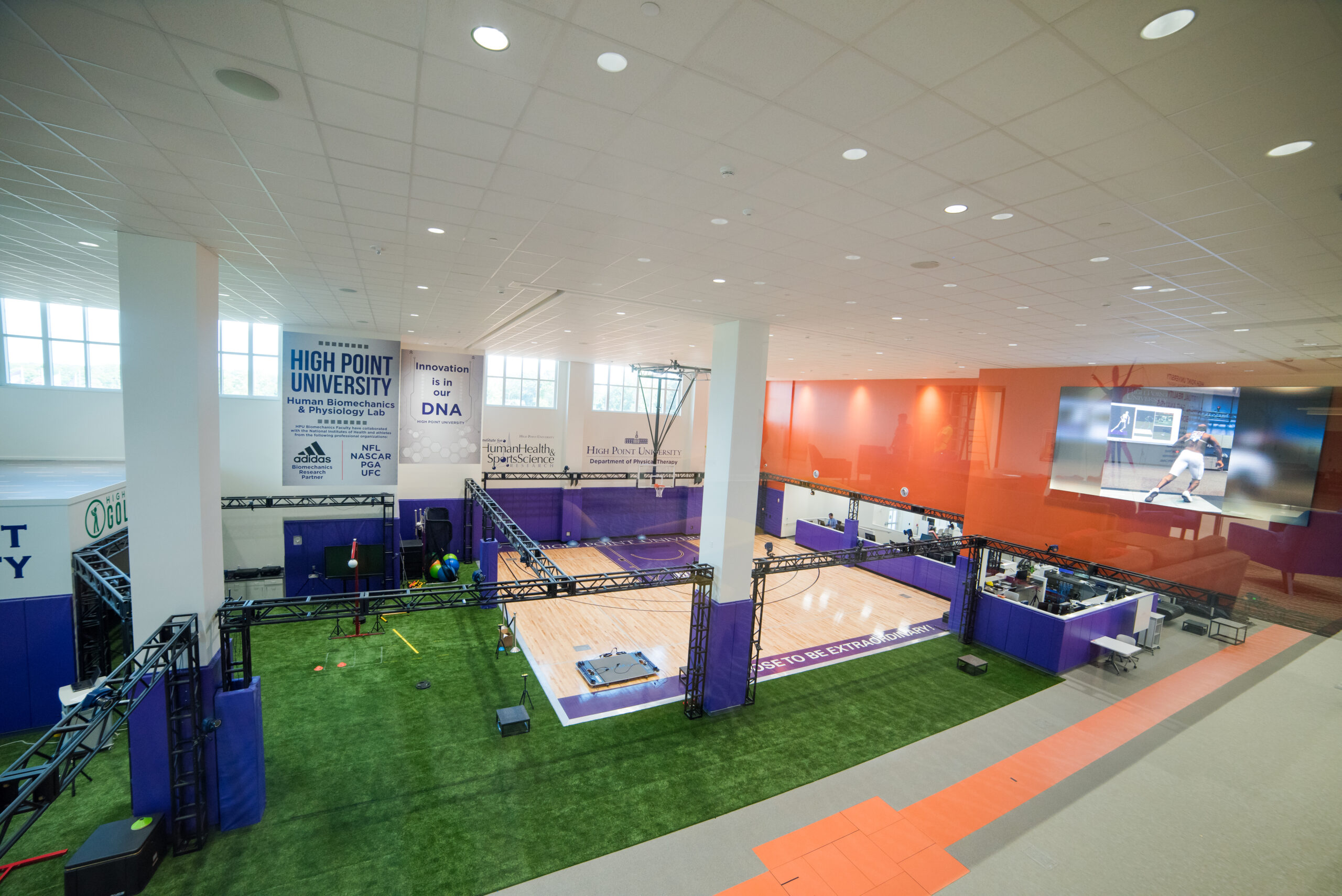

Who Would be Happy Here?
Students looking for experiential learning, good internship opportunities, and career preparation. High Point University also would appeal to students looking for warm weather, a beautiful campus and active Greek and sports programs. The student body tends to be more conservative. Students who are active would find plenty of opportunities to get involved at HPU.
Are you a College Expert student interested in exploring High Point University? Visit www.highpoint.edu to learn more and talk with Sue or Ryan about whether it’s a good fit for you.
Reflections on our Class of 2022
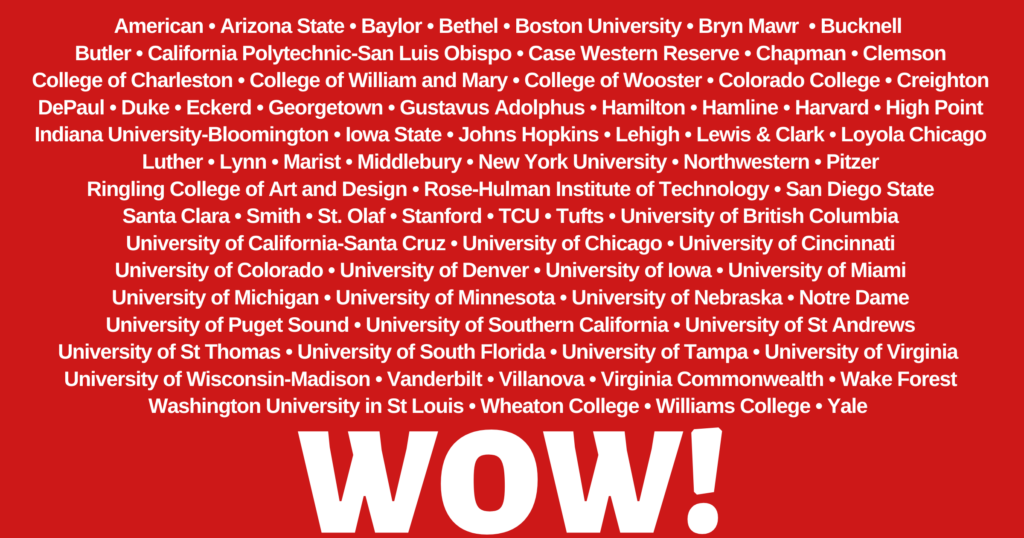
Meeting with students to finalize their college decisions is one of the most rewarding steps in our journey with them. Sometimes they have had a clear goal in mind throughout the process, and we are celebrating that exciting accomplishment. But just as often, the months leading up to that meeting are self-reflective. Their final decision represents what they’ve discovered about themselves, what’s important to them, and where they can best make their dreams happen. Either way, the college decision meeting is not so much an end, but a glorious beginning.
We are so proud of our Class of 2022. While the school year felt somewhat more “normal” this year, it wasn’t without challenges. In college admissions, schools mostly remained test optional, which among other factors led to a record number of applications. As a result, many colleges became an even greater reach. Many students did beat the odds, and we are cheering their success. But denials allowed others to more clearly examine all their options and opened their eyes to the amazing opportunities they had in front of them, which we believe can sometimes lead to an even better fit.
This year’s matriculation list fills us with tremendous pride and satisfaction. We are confident our Class of 2022 is headed to colleges where they can be challenged, find their community and move forward with their own personal goals.
We are excited to report:
- 100% of our students applied to some colleges by the early action deadline and heard back from colleges before winter break.
- 35% of our students applied ED/Restricted Early Action and 71% were accepted.
- 75% of our students who applied to highly selective colleges were accepted.
- 88% of our students will attend out-of-state colleges (whereas nationally approximately only 11% venture further than 500 miles from their hometown)
- 95% of our students will attend their first choice or a high-interest college
Drawing on our knowledge, our experience, and hundreds of college visits, we recommended an eclectic mix of colleges, many of which were unfamiliar to our clients. In fact, it’s possible some students never would have considered the colleges they chose without comprehensive and thoughtful discussions about finding the right fit – our guiding philosophy. As a result, they made decisions confident their choice was right for them.
Our Class of 2022 students will matriculate to colleges across the country and around the world. As you can see in our matriculation list, we have many students going to some of the most selective colleges in the country (and acceptances at all the Ivies except for Princeton). We also have students going to national universities, engineering schools, art schools, small liberal arts colleges, colleges out of the country, research universities, Big Ten Universities, and colleges with in-state tuition. We have aspiring musicians, artists, recruited athletes, activists, actors, nurses, engineers, business majors, researchers, doctors, writers and much more. We strive to help families find ways to afford college tuition, and we were overjoyed with the merit scholarships, grants, and aid awarded to our students.
We were honored to help prepare the Class of 2022 for the next chapter and will always remember the challenges and surprises we experienced together during this extraordinary year. We wish our seniors all the best with the journey ahead. Please keep in touch!
Here is our College Matriculation List for our Class of 2022:
American University
Arizona State University
Baylor University
Bethel University
Boston University
Bryn Mawr College
Bucknell University
Butler University
California Polytechnic State University-San Luis Obispo
Case Western Reserve University
Chapman University
Clemson University
College of Charleston
College of William and Mary
College of Wooster
Colorado College
Creighton University
DePaul University
Duke University
Eckerd College
Georgetown University
Gustavus Adolphus College
Hamilton College
Hamline University
Harvard University (Three students will attend)
High Point University
Indiana University-Bloomington
Iowa State University
Johns Hopkins University
Lehigh University
Lewis & Clark College
Loyola University Chicago
Luther College
Lynn University
Marist College
Middlebury College
New York University
Northwestern University
Pitzer College
Ringling College of Art and Design
Rose-Hulman Institute of Technology
San Diego State University
Santa Clara University
Smith College
St. Olaf College
Stanford University
Texas Christian University
Tufts University
University of British Columbia
University of California-Santa Cruz
University of Chicago
University of Cincinnati
University of Colorado
University of Denver
University of Iowa
University of Miami
University of Michigan – Ross School of Business
University of Minnesota-Twin Cities
University of Nebraska
University of Notre Dame
University of Puget Sound
University of Southern California
University of St Andrews
University of St Thomas
University of South Florida
University of Tampa
University of Virginia
University of Wisconsin-Madison
Vanderbilt University
Villanova University
Virginia Commonwealth University
Wake Forest University
Washington University in St Louis
Wheaton College (Illinois)
Williams College
Yale University
May 2022 College Expert Newsletter
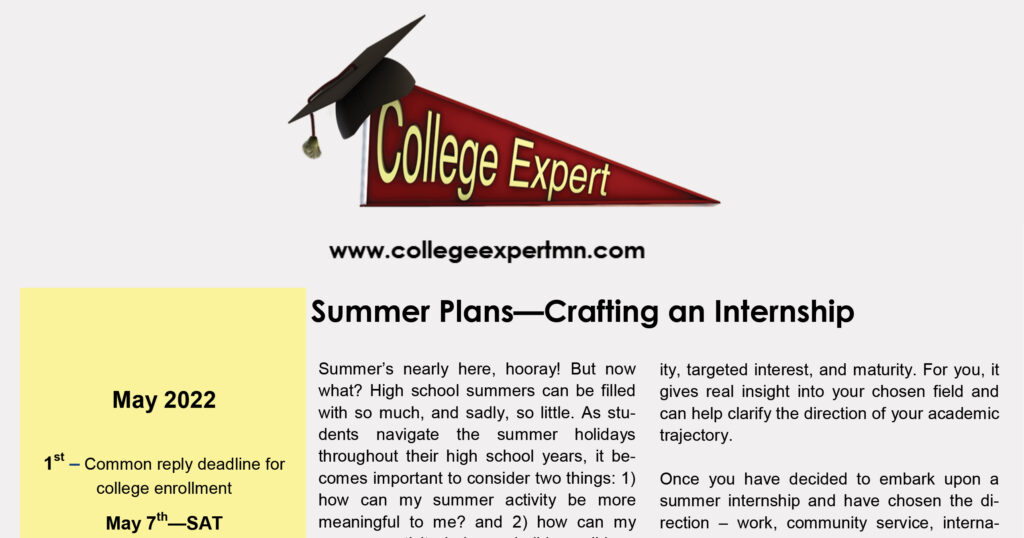
Summer internships are a great way to gain first-hand experience – and can be a stepping stone to even bigger opportunities. But how do you find one? Read our tips for getting started. Other articles include:
Focus on Geodesign – A major that connects science, design, people and communities.
Financial Matters – Talking to Your Kids about Money.
College Search for Students with Learning Differences – Identifying best fit campuses.
Read the May issue.
College Spotlight on Northwestern University
The quarter system at Northwestern allows Lorien to study multiple majors – a huge plus for this student with varied interests. Considering Northwestern? Read about Lorien’s first year at this rigorous Big 10 school!

April 2022 College Expert Newsletter
Getting to know a college often requires a visit (or two) and the focus of your tour depends on where you are in the process. Read more in our April issue. Other articles include:
Focus on Supply Chain Management – A business major with many opportunities.
Financial Matters – Should you appeal your financial aid award?
Making that Final College Choice – Helpful tips for sorting out your options.
College Spotlight On Loyola University Chicago
At Loyola University Chicago, Zara is gaining hands-on experience in the Elementary Ed program and experiencing college life in a major metropolitan city. Read why this freshman loves Loyola!
March 2022 College Expert Newsletter
Upcoming changes to the SAT include a shorter, online format and the use of calculators. Read about the College Board’s updates to this standardized test. Other articles include:
- Focus on Molecular Biology – An in-demand degree for science enthusiasts.
- Financial Matters – College majors with the best ROI.
- Waitlist Purgatory – How to be proactive when placed on a waitlist.
College Spotlight on the University of Edinburgh
Solveig’s expectations of a typical college experience have been replaced with the sound of bagpipes and 500-year-old architecture. Read about this freshman’s international adventure at the University of Edinburgh in Scotland.
